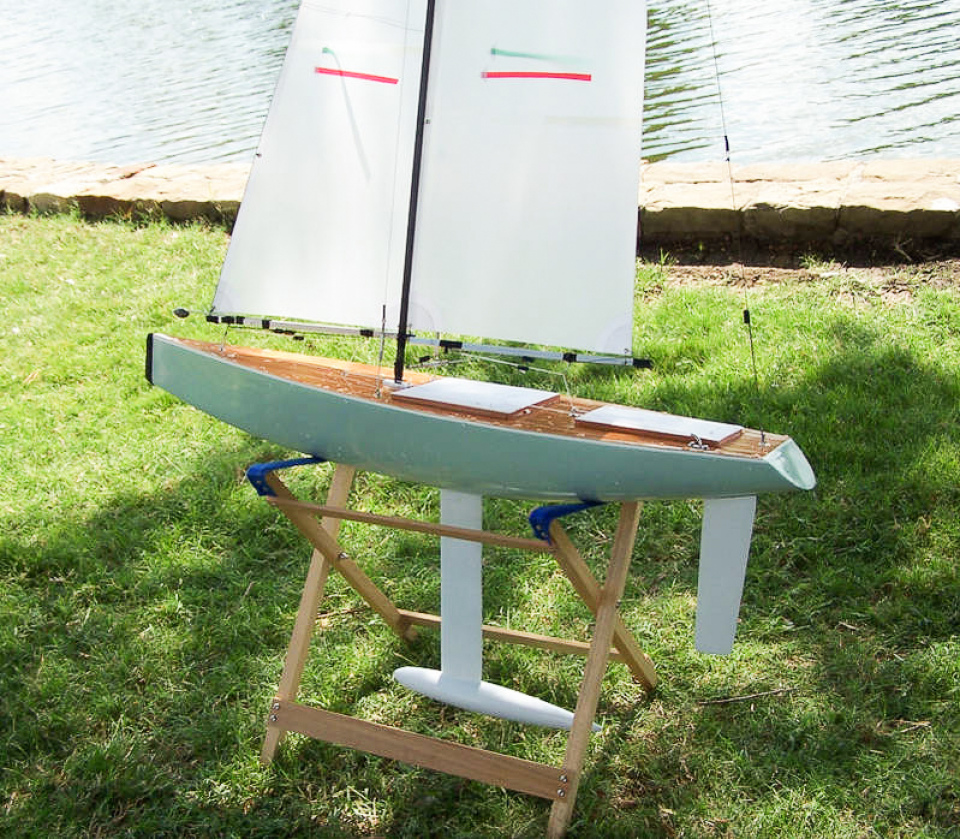

Build your own radio controlled yacht
Are you ready to embark on the exciting journey of building your very own model rc yacht.
Our comprehensive eBook has clear building instructions and step-by-step photography for the Racing Sparrow 750mm RC Yacht.
What we cover in our boat building eBook
Download a sample of our eBook
Even those with limited building experience can join in on the fun with minimal materials and a simple toolset. Our eBook by New Zealander Bryn Heveldt covers strip planking, fibreglass strengthening, mould and casting techniques, electrics installation, spray painting and masking, sail making and tuning.
To get started on your Racing Sparrow model RC yacht project, purchase our eBook and download the PDF now.
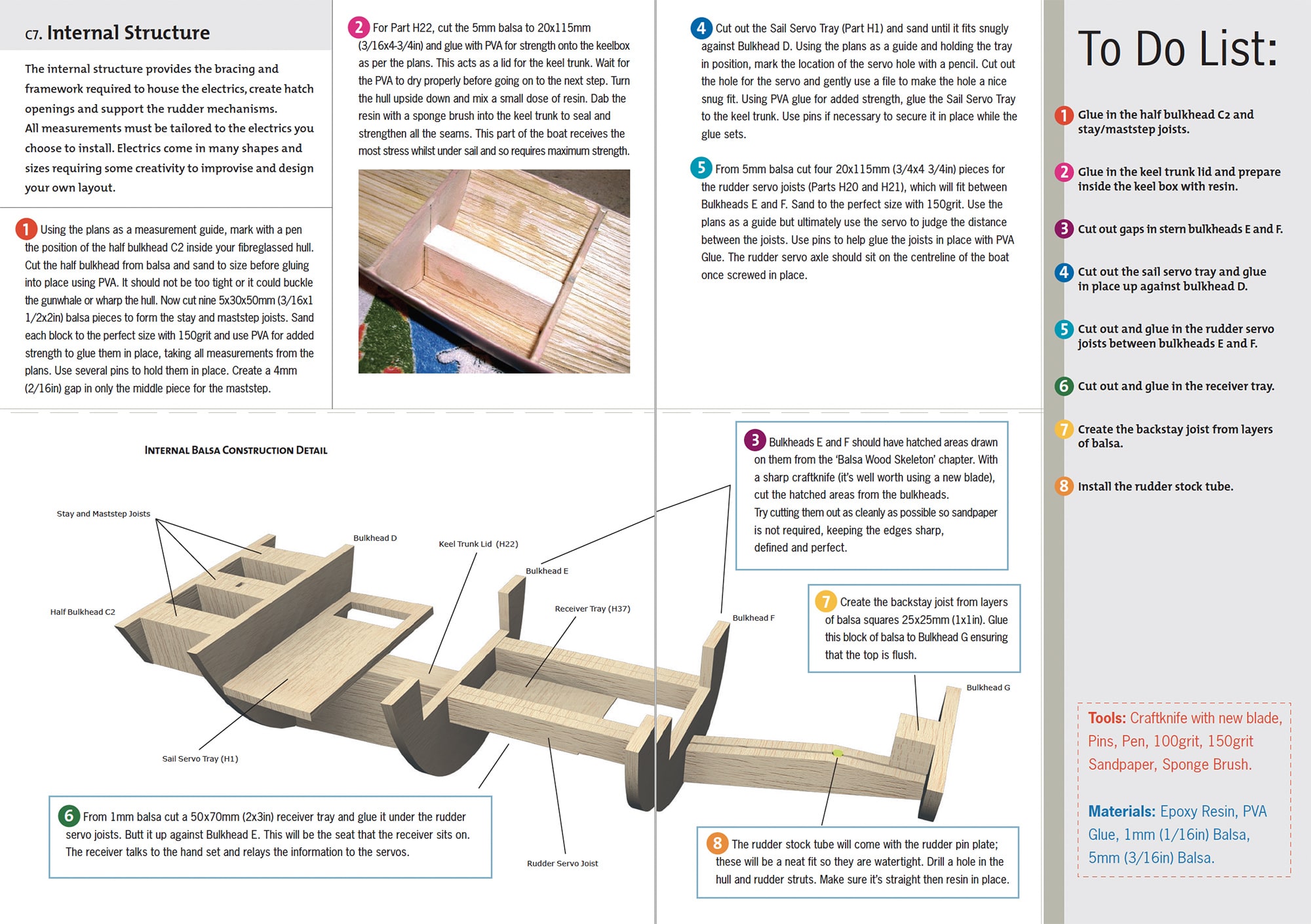
Racing Sparrow blog
We share tips and stories from the model boat building community. See all Blog Posts.
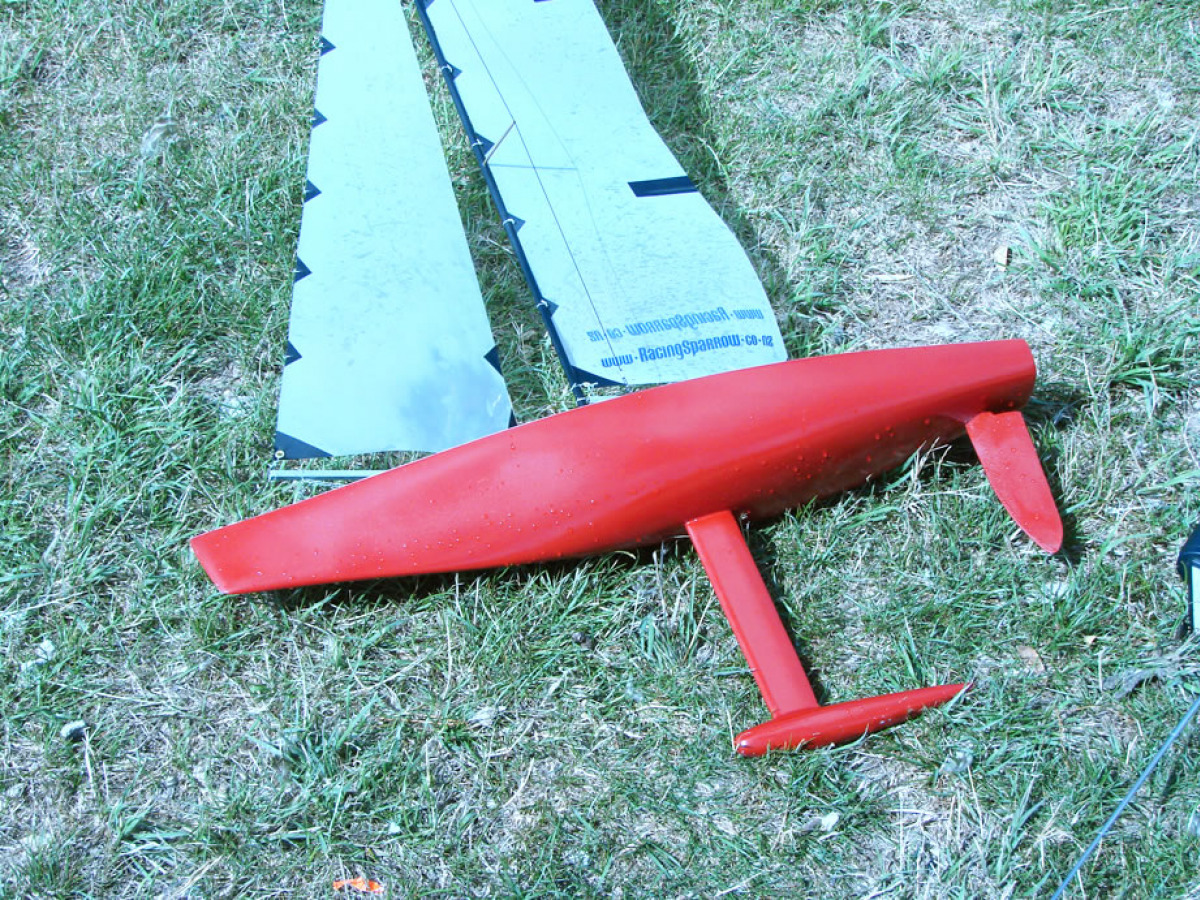
The Design Rationale for the RacingSparrow 750
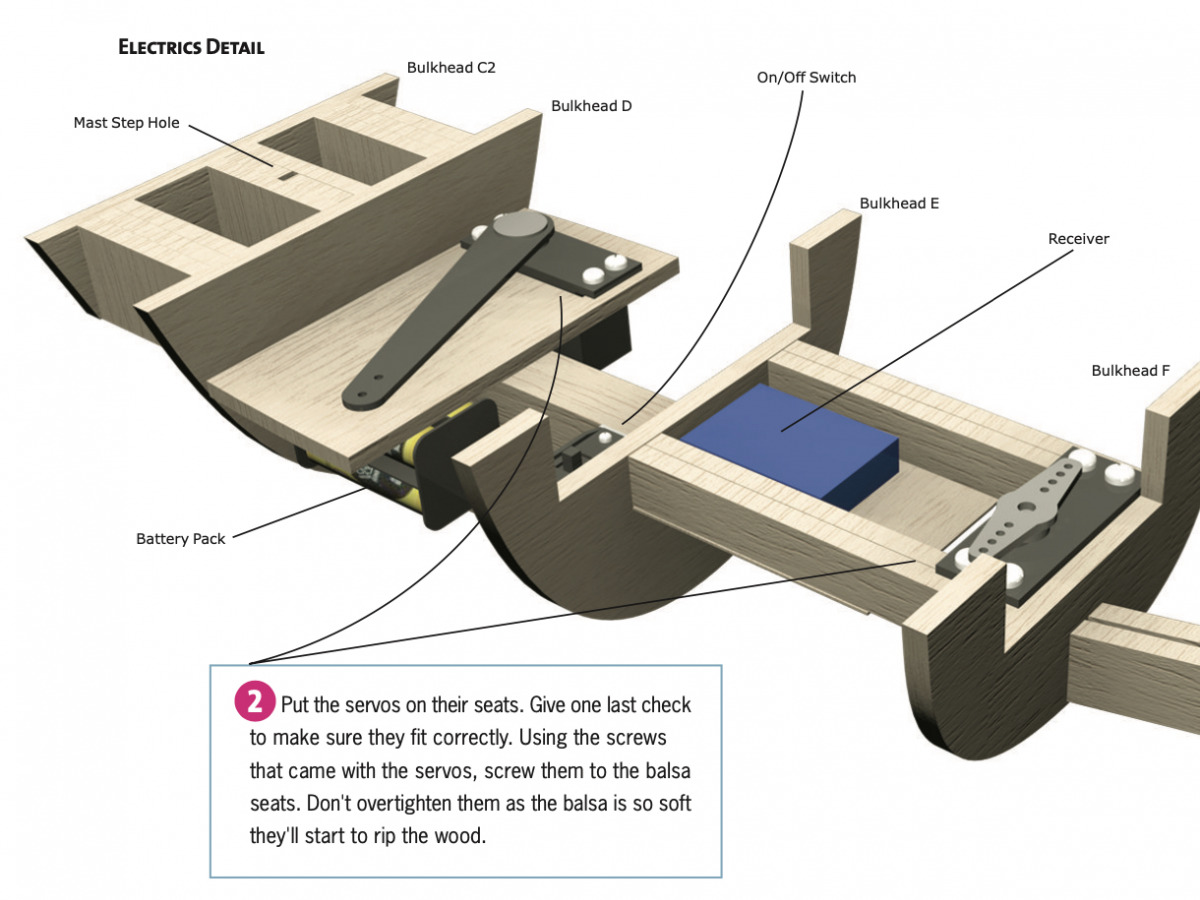
Radio Controlled Yacht Electrics - For Beginners
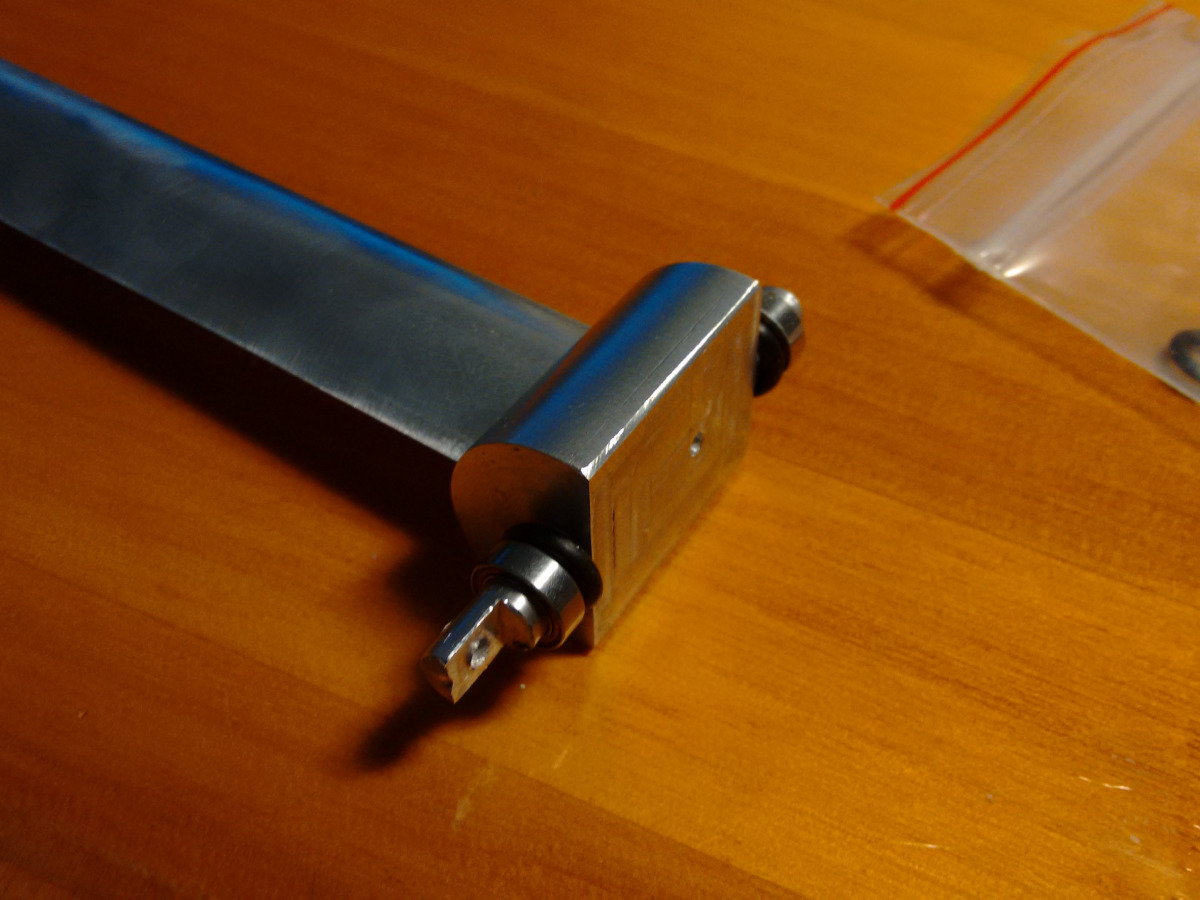
Model Yacht Design: Pushing the Limits with Racing Sparrow
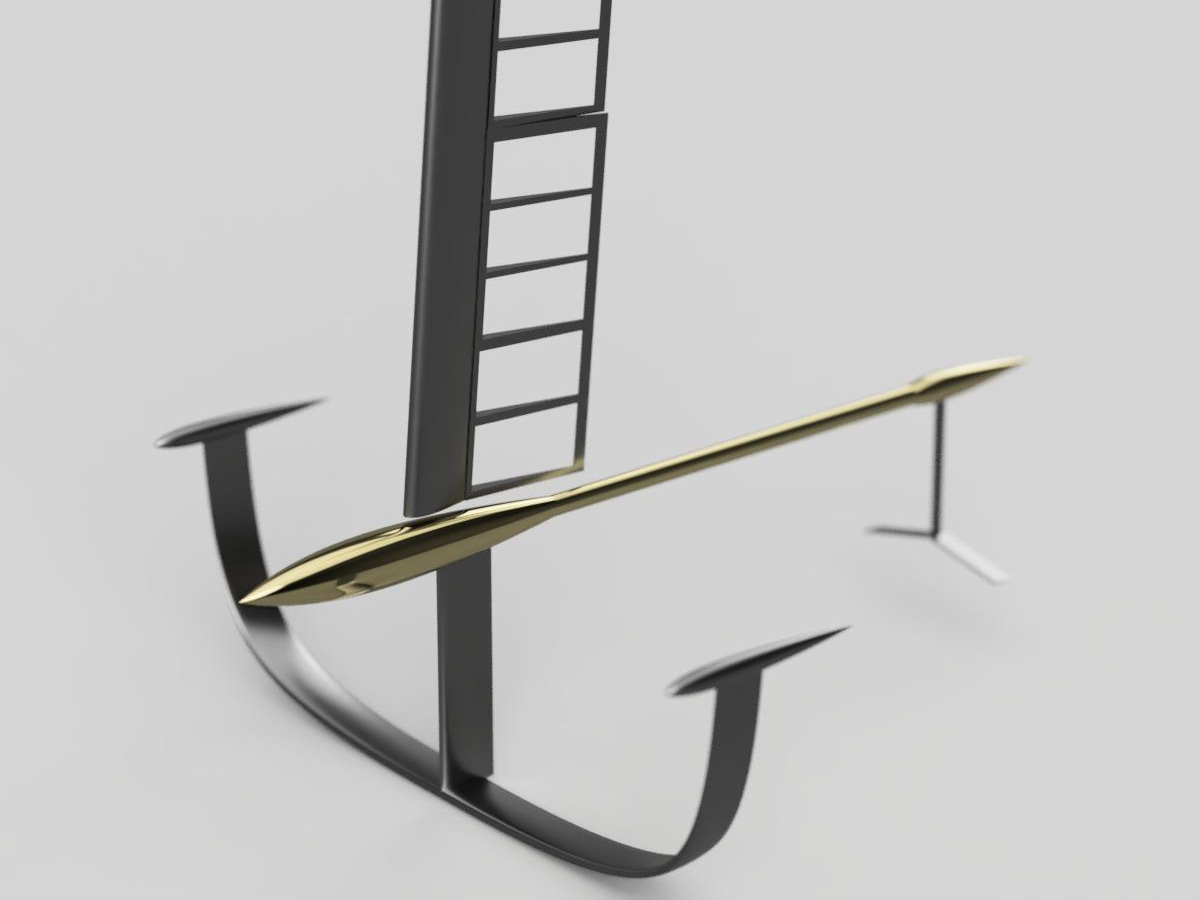
Using 3D Programs to Design Boats: A Beginner's Journey with Fusion 360
Free model boat plans.
We provide a number of different boat plans that you can build using techniques covered in our full eBook.
You can download plans for boats of different sizes and specifications.
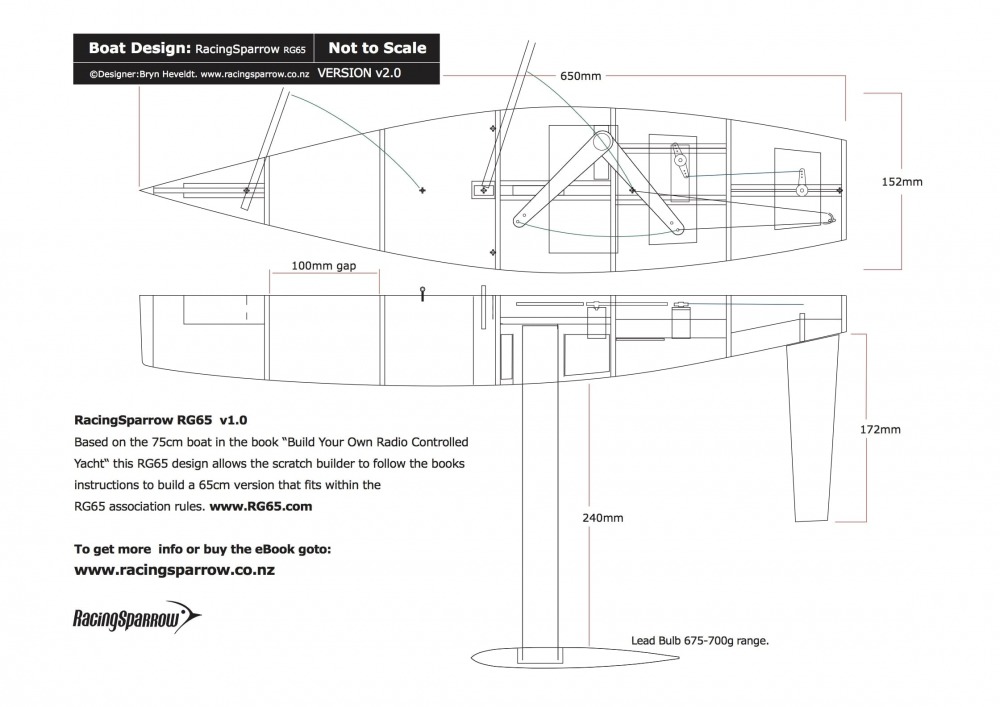
What our customers say about Racing Sparrow
Being a complete novice, I purchased your book a couple of years ago and built two racing sparrows. Building on this experience I then went on to build, from scratch, an IOM (Triple Crown design). I've since joined a local club and sail virtually every weekend. I would just like to thank you for your endeavours which have allowed me to enter a world I never thought was in my reach.
John Sterland, Australia
Coming upon your book, "Build your own Radio Controlled Yacht" in the Napier Public Library, I am hugely impressed. The combination of your superb photos and illustrations with your easy writing style make it a standout publication and I hope it does well for you.
Richard Spence, New Zealand
Thanks for an excellent design in your RG65. I trialled her again today in a solid 20 knots gusting higher. Even so in a steep chop and fingers off the rudder she drove upwind remarkably well, balanced perfectly. Very impressed that a model boat can handle that with a large rig. I found the book excellent. Ive built several big boats, plus a few skiffs and without that resource building such a good boat would have been impossible.
Mike Bennett
Boats built by the Racing Sparrow community
We continue to be amazed at the beautiful model RC boats created by Racing Sparrow enthusiasts . Send your images to info@racingsparrow.co.nz.
Take a look at the full boat gallery page. So many fine model yachts!
Bryn the Authors 750
Jan 19, 2006

Jerome Declerck - 2 750s
Dec 3, 2020

Sparrow I found on the net, looks like an rs1500 , Internet
Feb 2, 2010

An icy looking spot for a 375!
Jan 3, 2011

More about Racing Sparrow
When I was nine years old my father, Ross Heveldt taught me to sail down at Bucklands Beach in Auckland. My wee optimist dinghy was called 'The Racing Sparrow', the nickname my uncle Bruce Curry gave to me when I was a small boy. Apparently I had an abundance of energy.
I studied at Whanganui School of Design and have been a designer / developer since 1998. I live in New Zealand.
Best wishes and happy sailing, Bryn Heveldt.
To contact me please email: info@racingsparrow.co.nz
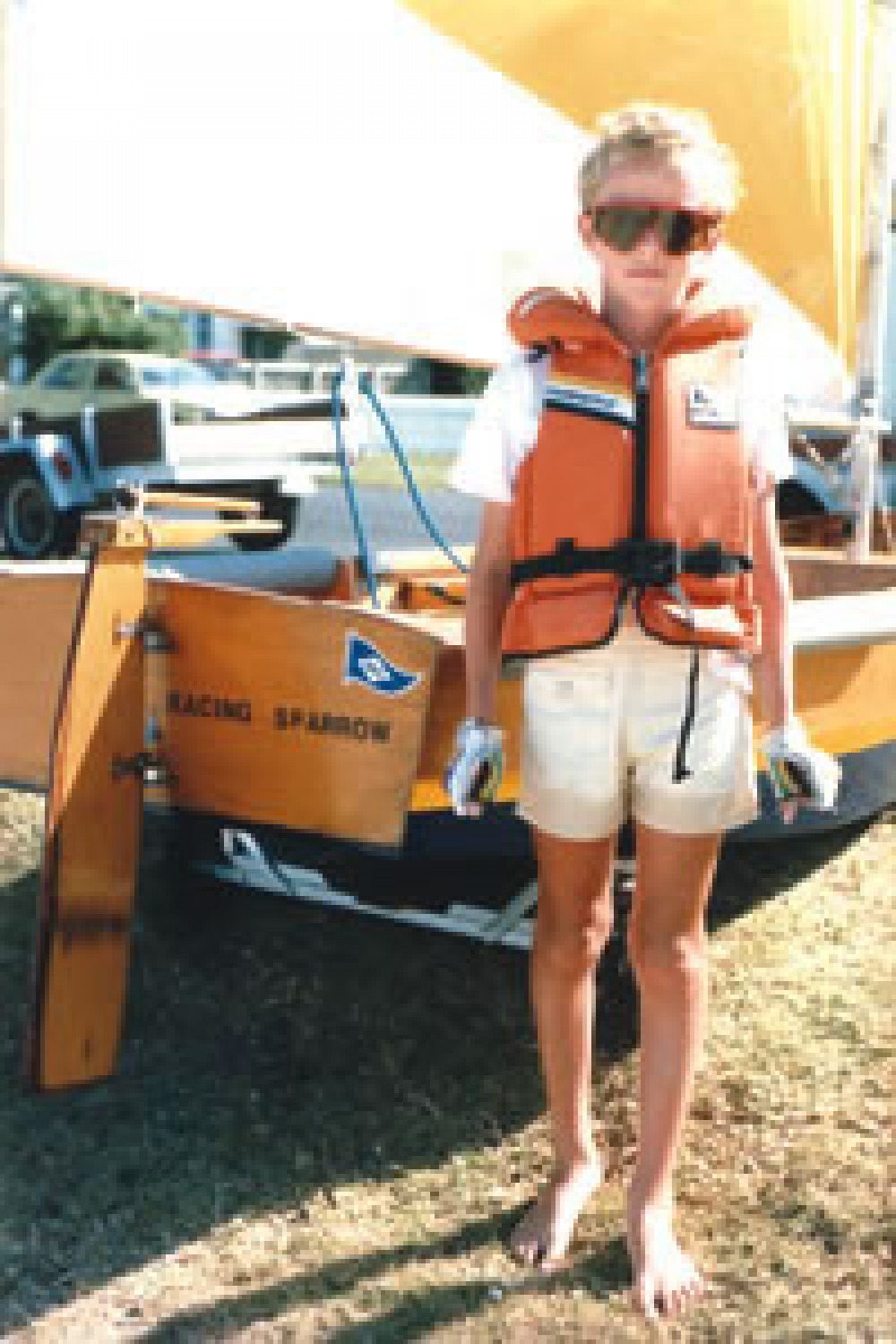
- Best RC Boat Plans
Immerse yourself in the exciting world of RC boat Plans.

A Voyage through RC Boat History
Since the earliest days of humankind, water vessels have captivated our imaginations. But in the last century, the thrill of sailing transitioned from vast open oceans to the comforts of our backyards with the evolution of Radio-Controlled (RC) boats . This shift marks an intriguing juncture in our maritime journey. Let’s embark on a voyage through the rich history of RC boats.
- The Dawn of Radio Control: Before RC boats could set sail, radio control technology needed to be invented and refined. The early 20th century saw the emergence of basic remote-controlled devices. As technology advanced post World War II, the application of radio control in hobbyist models began to gain traction.
- The 1950s – Birth of a Hobby: By the 1950s, the basic principles of radio control were established, allowing enthusiasts to construct their transmitters, receivers, and servos. During this era, the first hobby-grade RC boats started to appear. These early models, often handcrafted from wood or metal, were powered by rudimentary electric or gas engines.
- The 1970s – Commercial Rise: With technological advancements and increasing interest, the 1970s marked a boom in the commercial availability of RC boats. Companies started producing ready-to-run models, kits, and accessories, making it easier for hobbyists to dive into RC boating.
- The 1980s and 90s The Golden Age: With the miniaturization of electronics and improvements in battery technology, the late 20th century was truly the golden age of RC boating. Boats became faster, more durable and even began to mimic real-life counterparts with astonishing accuracy. Racing competitions became popular, further fuelling the growth and innovation in the industry.
- 21st Century – Technological Renaissance: The turn of the century saw increased RC boat diversity. There was an RC model for every maritime enthusiast, from jet boats to sailboats, submarines to hovercrafts. Digital technology allowed for more precise controls, brushless motors offered greater power, and lithium batteries extended run times. Moreover, the advent of 3D printing has given hobbyists the freedom to craft custom parts, further pushing the boundaries of design and functionality.
- Today – A Community Afloat: RC boating is more than just a hobby—it’s a thriving community. Online forums, social media groups, and real-world meet-ups provide enthusiasts platforms to share designs and trade tips and celebrate the joy of sailing on a miniature scale.
In conclusion, the journey of RC boats mirrors the journey of human innovation. From humble beginnings to today’s sophisticated models, RC boats are a testament to our enduring fascination with water and our relentless pursuit of technological progress. As we look to the future, one can only imagine where the tides of innovation will take this beloved hobby next.
Crafting Your RC Boat: Beyond the Purchase
There’s an unmistakable charm in holding a sleek, miniature boat, knowing that you’ve created it. While the market is brimming with ready-to-sail RC boats , crafting your own has a deeper allure. Building an RC boat isn’t just about assembling parts; it’s about imprinting yourself in the creation. Let’s craft an RC boat, moving beyond just purchasing one off the shelf.
- The Thrill of Personal Touch: When you craft your RC boat, every curve, every paint stroke, and every tiny detail becomes an extension of your personality. It’s not merely an object; it’s a testament to your vision, patience, and craftsmanship. Manufacturers’ designs or color schemes do not limit you. Your boat, your rules.
- The Learning Curve: Beyond the allure of customization lies the rewarding challenge of the build. Understanding buoyancy dynamics, propulsion systems’ intricacies, or weight distribution nuances offers a hands-on educational experience. Every challenge faced and overcome adds to your repertoire of skills and knowledge.
- Economics of DIY: While investing in tools and materials might seem costly upfront compared to a ready-to-run model, DIY can be more economical in the long run. With the know-how, repairs, upgrades, or even fleet building becomes significantly cheaper.
- Unraveling Creativity: Crafting your boat gives you the canvas to experiment. Want a hybrid of a speedboat and a yacht? Or perhaps a unique paint job that’s never been seen before? When you’re the builder, the only limit is your imagination.
- Sustainability and Upcycling: DIY allows for sustainable choices. Old materials can find new life in your creations. That discarded piece of wood? It could be your boat’s deck. An old plastic container? It’s your boat’s hull waiting to be shaped.
- Emotional Bonding: The bond you share with something you’ve created from scratch is unparalleled. Every trial and error, every success and setback in the building process, weaves a unique story. The result is not just a boat; it’s a chronicle of your journey.
- Community Engagement: Building your RC boat opens doors to a vibrant community of like-minded enthusiasts. Sharing build logs, seeking advice, and showcasing your creation fosters connections, camaraderie, and collective growth.
While buying an RC boat offers instant gratification, building one provides a deeper, more enriching experience. It’s an endeavor that transcends the act of mere assembly. Crafting your RC boat is about embracing challenges, exploring creativity, and ultimately, basking in the unparalleled satisfaction of watching your vision come to life on the water. So, are you ready to set sail on this crafting adventure?
The Role of a Detailed Plan
A dream without a plan is just a wish. Understand the importance of a meticulous RC boat plan that serves as a roadmap, guiding hobbyists through every twist and turn of the boat-building journey, ensuring a masterpiece upon completion.
Understanding the Basics of RC Boats
Every journey begins with understanding the basics, and the world of RC boats is no different. Before delving into the complexities of RC boat plans , it’s essential to grasp what makes these miniature marvels tick.
The Essence of an RC Boat
Radio Controlled boats are more than just toys; they are a culmination of engineering, design, and passion. These miniature boats operated remotely offer hobbyists a chance to sail, race, and even perform stunts on water surfaces without actually being on the boat.
Core Components: From Hull to Rudder
The beauty of an RC boat lies in its components, each playing a pivotal role:
- Hull: The boat’s body design can vary based on the boat type, affecting its speed, stability, and overall performance.
- Motor: The heart of the RC boat. Depending on the model, it could be electric, nitro-powered, or gas-powered.
- Rudder: This steering device helps in navigating the boat. Positioned at the boat’s stern, it directs the water flow, guiding the boat’s direction.
- Propeller: Transforms the motor’s power into thrust, propelling the boat forward.
- Radio Transmitter and Receiver: The primary tools for communication. The transmitter sends signals, which the receiver on the boat catches, leading to action.
- Battery: Powers the motor and other electronic components. It determines the boat’s runtime.
Charting Different Waters: Types of RC Boat Plans
Just as in the real world, RC boats come in a variety of designs, each tailored for specific activities:
- Sailboats: Powered primarily by sails, they require a deep understanding of wind patterns.
- Racing Boats: Built for speed. They boast streamlined designs and powerful motors.
- Scale Boats: Miniature replicas of real-world boats, focusing on intricate details and aesthetics.
- Submarines: Yes, there are RC submarines too! Designed to dive and resurface, offering a unique experience.
- Tug Boats: Strong and sturdy, often used for pulling or pushing other boats.
By understanding these basics, you’re not just one step closer to building your own RC boat but also appreciating the intricate marvels of these miniature vessels.
Why Choose DIY RC Boat Plans?
While there’s no shortage of ready-to-sail RC boats on the market, the allure of crafting one from scratch is an unmatched experience. Let’s examine why boat plans are an irresistible choice for enthusiasts.
Crafting with Passion and Precision
Building an RC boat from a plan is not just assembling parts; it’s an artistic endeavor. It’s about:
- Involvement: Every cut, every screw, every adjustment—you’re involved in each step, understanding the nuances and intricacies of your boat.
- Learning Curve: With each challenge you face and overcome, you learn. Be it understanding materials, aerodynamics, or electronics, the learning never stops.
- Satisfaction: The sense of accomplishment when your handcrafted boat first hits the water is unparalleled. It’s a testament to your dedication and hard work.
The Uniqueness of Customization
When you choose a DIY approach:
- Personal Touch: Your boat will never be just another model. From color choices to design tweaks, it’ll reflect your personality.
- Modifications: Want a faster motor? A sleeker design? With DIY, you’re the master of modifications, not restricted by pre-made designs.
- Innovations: As you grow as a hobbyist, you can incorporate new technologies or features, making your boat a continuous creation project.
Saving Bucks: DIY vs. Pre-made Models
Beyond the passion and customization, there’s a practical advantage:
- Cost-Effective: Building from scratch can be more wallet-friendly. You decide where to splurge and where to save.
- Maintenance: Understanding your boat inside-out means you’re better equipped to handle repairs, potentially saving on maintenance costs.
- Upgrade Path: Instead of buying a new model for an upgrade, you can make incremental changes to your boat, spreading out costs and getting what you want.
In closing, choosing a DIY RC boat plan isn’t just about building a boat; it’s about creating an experience, memories, and skills that last a lifetime.
Essential Tools and Materials for Your RC Boat Blueprint
Crafting an RC boat from a blueprint isn’t just an exercise in creativity; it requires a precise set of tools and the right materials. Let’s break down what you’ll need to make your dream RC boat a reality.
Assembling Your Toolkit: Must-haves for Hobbyists
Before you embark on your boat-building journey, ensure you have these tools at your disposal:
- Cutting Tools: Precision knives, saws, and scissors are essential for detailed cuts.
- Measuring Tools: Rulers, calipers, and protractors to ensure exact dimensions.
- Soldering Kit : For connecting electronic components securely.
- Sandpaper : Different grits for smoothing surfaces.
- Clamps and Vices : To hold components securely during assembly or drying.
- Glues and Adhesives : Wood glue, epoxy, and super glue cater to bonding needs.
- Screwdrivers and Pliers : For those tiny screws and intricate fittings.
- Paint Brushes and Sprayers : For that impeccable finish.
Wood vs. Plastic: What Suits Your Vision?
The primary material you choose will define your boat’s aesthetics, performance, and durability:
- Pros: Offers a classic, authentic look. It’s also easy to shape and modify.
- Cons: Requires more maintenance to prevent water damage.
- Popular Choices: Balsa, plywood, and mahogany are among the favorites.
- Pros: Durable and resistant to water damage. Lightweight and versatile.
- Cons: It might lack the “authentic” feel of wood.
- Types: ABS plastic and polystyrene are commonly used.
Powering Your Craft: Motors and Electronics
The heart and brain of your RC boat:
- Motors: Choose based on desired speed and performance.
- Electric: Quiet and efficient, great for general use.
- Nitro: High-speed performance but requires fuel.
- Gas: Suitable for larger models, offers extended run time.
- Batteries: Capacity and type determine run time. LiPo batteries are famous for their power-to-weight ratio.
- Radio System: Consists of a transmitter (the remote) and a receiver (on the boat). Ensure they’re compatible.
- Servos: These convert radio signals into motion, controlling rudders and sails.
Safety First: Gearing Up Right
Safety is paramount, both during the building process and while sailing:
- Goggles: Protect your eyes from flying debris.
- Gloves: Safeguard against cuts and chemical exposures.
- Ventilation: When using adhesives or paint, ensure good airflow.
- Fire Safety: Especially important when soldering or working with electronics.
- First Aid Kit: For any minor injuries during the crafting process.
- Water Safety: Always retrieve your boat safely. Consider a retrieval boat or a fishing line.
Remember, while the right tools and materials are pivotal, your passion and commitment are crucial in building an RC boat.
Dive into Popular RC Boat Plans for Hobbyists
Whether you’re just starting or have spent years mastering the art, an RC boat plan is tailored for you. Let’s explore options based on skill level, ensuring every hobbyist finds their perfect match.
Plans Tailored to Your Expertise
It’s essential to choose a plan that aligns with your expertise. Doing so not only ensures a smoother building process but also helps in mastering skills progressively.
Setting Sail: Beginner-Friendly Designs
Just dipping your toes in the RC boat world ? Here are designs tailored for newcomers:
- Simple Tugboats: Their sturdy design makes them forgiving for novices. They focus more on buoyancy and balance rather than speed.
- Basic Sailboats: Have a sail, a rudder, and a hull. These help beginners understand wind dynamics without the complexities of motors.
- Monohull Speedboats: While speed might be in the name, beginner versions are more about straight-line stability than breaking records.
Tip: Look for plans that prioritize minimal parts and straightforward assembly instructions.
Navigating Deeper Waters: Intermediate Plans
Once you’ve got the basics down, it’s time to challenge yourself a bit:
- Dual-Hull Catamarans: With two hulls, these boats offer better stability at higher speeds—a balance between complexity and performance.
- Scale Models: Replicas of real-world boats. While they might be simple in mechanics, the attention to detail can be a fun challenge.
- Nitro-powered Speedboats: Introducing a nitro engine adds complexity in both assembly and maintenance, perfect for hobbyists looking to level up.
Tip: At this stage, focus on plans that offer customization options, allowing you to tweak based on personal preferences.
The Captain’s Challenge: Advanced Blueprints
For those who’ve conquered the seas and are looking for their next big challenge:
- Detailed Warships: Not only do these require intricate detailing, but they also incorporate advanced features like firing cannons or rotating turrets.
- Submarines: The challenge here is not just in the build but also in mastering buoyancy and underwater navigation.
- Hydroplane Racers: These boats sit atop the water, making their dynamics and balance a real test for builders.
Tip: Advanced plans often assume a certain level of expertise. Ensure you’re comfortable with terminology and techniques before diving in.
Choosing the right plan is crucial, but remember, the journey of building an RC boat is as rewarding as the destination. So, pick a blueprint that excites you and set sail on your boat-building adventure!

Step-by-Step Guide to Building Your Dream RC Boat
Building your RC boat is a journey; like all great journeys, it requires a roadmap. Here’s your step-by-step guide to ensure smooth sailing from start to finish.
Deciphering Your RC Boat Plan
Every great build starts with understanding the blueprint.
- Study the Plan: Before anything else, familiarize yourself with the overall design, components, and terminology.
- List Materials and Tools: List all materials you’ll need based on the plan. Ensure you also have the right tools.
- Understand the Sequence: Some plans have a specific sequence for better efficiency. It’s always good to follow the recommended order.
Crafting the Perfect Hull
It’s crucial to get this part right.
- Select Your Material: Be it wood or plastic, ensure it aligns with your vision and the boat’s purpose.
- Cutting and Shaping: Using the dimensions from your plan, begin cutting out the hull shape. Sand down edges for a smooth finish.
- Assembling the Hull: If your boat has multiple hull pieces, now’s the time to assemble. Use clamps to hold parts together while the adhesive dries.
- Reinforcing: Depending on the design, you might need to support the hull with internal ribs or bulkheads for added strength.
Power Dynamics: Motor and Electronics Installation
Your boat’s heart and brain come to life in this step.
- Selecting a Motor : Choose based on your boat’s size and desired speed. Electric motors are standard, but nitro and gas are options for speed enthusiasts.
- Mounting the Motor : Securely attach the motor to the hull, ensuring it aligns perfectly with the propeller’s location.
- Installing the Electronics : Place the receiver, ensuring it’s well-protected from water. Connect it to the motor and, if applicable, to the rudder servo.
- Testing : Before sealing everything up, run a quick test. Ensure the motor runs smoothly and that the rudder responds to the transmitter.
The Final Touch: Paint and Finish
It is where your boat truly comes to life aesthetically.
- Priming: Before painting, apply a primer. It ensures better paint adherence and offers additional protection to the hull.
- Painting: Choose paints suitable for your material. Consider using bright colors for visibility. Multiple thin coats often work best.
- Decorative Details: If you’re creating a scale model or want added flair, now’s the time to add decals or any other decorative details.
- Sealing: Once everything’s dry, apply a sealant to protect against water and UV damage. It enhances durability and ensures longevity.
With these steps, your dream RC boat should be ready to make waves. Remember, patience and precision are essential.
The success of your RC boat build lies not only in the core steps of the process but also in the finer details and approaches you adopt. Here are some tips to ensure your blueprint turns into a successful RC boat.
Tips to Ensure Your RC Boat Blueprint’s Success
While passion drives the creation of your RC boat, a few guiding principles can make the difference between a good boat and a great one.
Precision and Patience: Keys to Perfection
The meticulousness you put into your project defines its outcome:
- Double Check Measurements: Always measure twice and cut once. This age-old adage holds especially true for intricate builds like RC boats.
- Avoid Rushing: While eagerness to see the finished product is natural, rushing can lead to mistakes. Take your time, especially during crucial steps like gluing or electronics installation.
- Invest in Quality Tools: Quality tools lead to quality work. Ensure your tools are sharp, clean, and well-maintained.
- Seek Feedback: If you’re part of an RC hobbyist community, don’t hesitate to share your progress and ask for feedback. Fresh eyes can spot potential issues.
Testing the Waters: Functional and Buoyant Checks
Before you officially launch, a few tests can prevent potential mishaps:
- Dry Run: Test all electronics outside of the water first. Ensure motors run and that the rudder responds to commands.
- Buoyancy Test: Place the boat in shallow water to check its buoyancy. Ensure there are no leaks and it sits on the water as intended.
- Control Range Test: With your boat in water, test the range of your transmitter. Ensure you maintain control even at farther distances.
- Safety Check: Especially for speedboats, ensure all components are firmly attached, and there’s no risk of parts coming loose during operation.
Long Journeys: Maintenance for Longevity
Your boat’s lifespan depends on the care it receives:
- Regular Cleaning: After each use, clean your boat. Remove any debris, especially from the propeller and rudder.
- Dry Thoroughly: Ensure your boat is dry before storage to prevent mold or structural damage.
- Battery Care: If using rechargeable batteries, store them partially charged. Avoid over-discharging, and check for damage regularly.
- Inspect and Repair: Inspect your boat for damage, especially after accidents. Address any issues promptly.
- Update Components: As technology advances, consider updating parts of your boat, like the motor or radio system, for enhanced performance.
By following these tips and keeping a meticulous approach, your RC boat blueprint will come to life and sail smoothly for years. Enjoy the journey and the destination!
RC boat building can be as much about navigating through challenges as it is about the joy of the finished product. Let’s delve into some common issues hobbyists face and how to address them:

Navigating Challenges in RC Boat Building
Every project has its fair share of hurdles. Recognizing potential pitfalls and knowing how to overcome them can make your boat-building journey smoother.
Common Hiccups and Their Solutions
- Warped Materials: Especially with wood, warping can occur by storing materials flat and in a controlled environment. Gentle bending or weighting can help straighten things if you encounter minor distortion.
- Drying Delays: Sometimes, adhesives or paints take longer to dry. Always check manufacturer recommendations and be patient. If in a humid environment, consider using a dehumidifier.
- Electronics Failure: Always test electronics before integrating. Ensure there’s no water infiltration and connections are secure.
Mistakes in Plan Interpretation and Corrections
- Misreading Dimensions: Double-check all measurements against the plan before making cuts. If a piece is cut wrong, it’s often best to replace it rather than try to adapt it.
- Incorrect Sequence : If you realize you’ve missed a step or done things out of order, evaluate if it’s possible to revert. Sometimes, working backward can resolve the error without starting over.
- Overlooking Details: Always cross off steps as you go. If a detail needs to be included, see if it can be added later without disrupting the already-completed work.
Overcoming Assembly Bottlenecks
- Alignment Issues : If elements don’t align, check for warping or mistakes in cuts.
- Component Integration: Commercial components (like motors) may sometimes need a better fit. Consider slight modifications, but ensure you don’t compromise the component’s function.
- Difficulty in Securing Parts: Use clamps or weights to hold pieces in place as glues dry. Always ensure the workspace is level.
Troubleshooting 101: Addressing RC Boat Glitches
- Boat Doesn’t Respond: First, check the transmitter’s battery. Then, ensure the boat’s battery is charged, and connections are secure.
- Motor Runs but Boat Doesn’t Move: Check the connection between the motor and propeller. Ensure there’s no debris caught in the propeller.
- Boat Lists or Sinks: Check for water in the hull. If there’s a leak, dry the boat and identify the source. Seal any gaps or holes.
- Loss of Signal at Short Distance: Ensure the receiver’s antenna isn’t damaged or submerged. Sometimes, interference from other electronics can be the culprit.
Remember, every challenge offers a learning opportunity. By methodically troubleshooting issues and seeking advice when needed, you’ll have a functional RC boat and gain a wealth of experience to apply in future projects.
Building an RC boat is much more than just following instructions—it’s an artistic endeavor that marries precision, patience, and passion. Like every journey, it’s marked by challenges and joys. So, as we dock at the conclusion harbor, let’s reflect on what we’ve explored.
The Harbor of Satisfaction: Reflecting on Your Build
Completing an RC boat is an achievement that mirrors the countless hours spent refining, understanding, and creating. Your finished boat is a testament to your craftsmanship and your learning journey. Mistakes made along the way have transformed into invaluable lessons, and triumphs have become cherished memories.
Every time your boat slices through the water, it’s not just propelling forward; it’s carrying the weight of your dedication, echoing your problem-solving grit, and reflecting the beauty of your vision. It’s a piece of art, a science project, and a toy; all melded into one.
The Ever-evolving World of RC Boat Plans
The world of RC boats is ever-dynamic. With advancing technology and evolving design philosophies, new plans and models continually emerge, offering hobbyists endless avenues to explore. It ensures that the world of RC boat building remains fresh, exciting, and continuously challenging.
Whether you’re a beginner setting sail on your first project or a seasoned hobbyist who’s navigated many waters, there’s always a new horizon waiting. And with every new plan comes a fresh wave of learning, creativity, and satisfaction.
In essence, RC boat building is a confluence of art, science, and emotion. It’s not just about the destination but also the journey. As you stand at the shore, watching your creation glide seamlessly, remember it’s not just the boat that’s set sail but also a piece of your heart. Here’s to many more builds, many more sails, and many more stories! Safe and happy sailing!
Join Our Fleet of Passionate Boat Builders!
Your boat-building journey doesn’t have to end here. The most beautiful part of this hobby is the community we build around it. So, why sail solo when we can navigate the waters together?
- Share Your Blueprints : Have an RC boat plan that you’re proud of? A unique design or an innovative approach? Please share it with us! We’d love to see the diverse range of creative genius our readers bring.
- Chronicle Your Experiences: Whether it’s a challenging hiccup you overcame or a triumphant first sail, your stories can inspire, educate, and entertain fellow hobbyists.
- Personal Hacks and Tips: Discovered a shortcut? Found a unique material or method? Please share your hacks, and let’s all benefit from collective wisdom.
Engage, Discuss, Connect
The true essence of any hobby lies in its community. Let’s spark discussions, ask questions, seek advice, and celebrate achievements. Whether you’re an RC boat rookie or a seasoned sailor, your insights and inquiries add value.
Set Sail Together in Our Passionate Community
Remember, every boat tells a story, and every builder has the wisdom to share. By creating a space where we can collectively share our journeys, we’re not just building boats but making connections.
Click below to join our vibrant community, share your story, and embark on new adventures with fellow enthusiasts!

| Boat Guide Book | |
| Sailboat designs & plans | |
| Canoes, kayak designs & plans | |
| Rowboat designs & plans | |
| Enter your Name & Email Below | |
- Wooden Glen L Boat Plans
- Drift Boat Plans The Ultimate River Runner
- Jon Boat Plans Your Guide to Dream Vessel
- Top Tips Plywood Boat Plans Reviewed
- Model Boat Plans Reviewed And Explained
- Best Pontoon Boat Plans
- The Best Wooden Boat Plans for Beginners
- The Best Cedar Strip Canoe Kits and Plans
- Kayak Plans for The Amateur Builder
- Sailboat Plans A Fine Place To Start
- Aluminum Boat Plans Reviewed
- Canoe Plans in Traditional and Modern Styles,
BoatNews.com
Free model boat plans: the MiniX, an easy-to-build radio-controlled sailboat
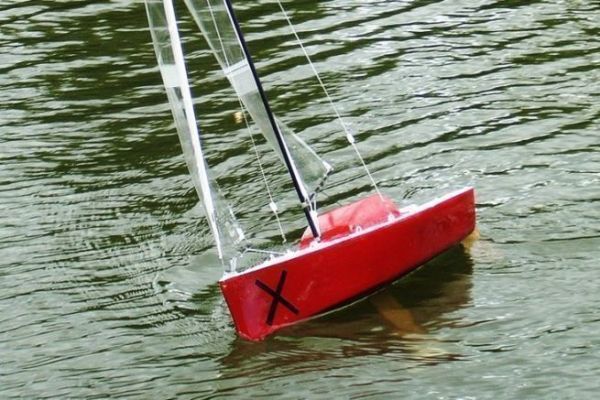
We set ourselves a challenge: to make a sailing model. In the end, after hours of reflection and work, we discovered that we took as much pleasure in designing and building as we did sailing our yachts. Here is the description of our project and the plans to download. Another article follows with the steps of the realization.
An easy-to-build, eye-catching, high-performance sailboat
Who hasn't dreamed of a little wooden sailboat with a beautiful canvas cover? The idea for this project is a child's dream.
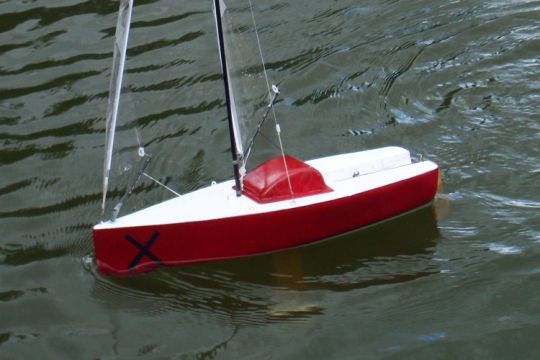
Sailing on a regular basis in "scale 1", we had the idea of having fun by sailing two boats to race in our "spare time". The boats had to meet the following specifications:
- Easy to transport . Measuring just 50 cm, our MiniX doesn't take up much space in a trunk. However, the keel and mast can be dismantled. If need be, the MiniX can even be included in our vacation luggage.
- Able to be thrown into the water "out the back of the car" without complicated implementation.
- No investment that would jeopardize our homes. As this is not a one-off activity, we didn't want to invest in expensive radio controls (our boat's biggest expense). A basic radio control kit is powerful enough to handle "small" sail surfaces.
- Resembling a sailboat at best, hence the presence of the deckhouse and cockpit. These two elements give a sense of scale without resorting to model-building. Above all, a sailboat must be beautiful. Don't we also sail for the pleasure of our eyes?
Modern construction
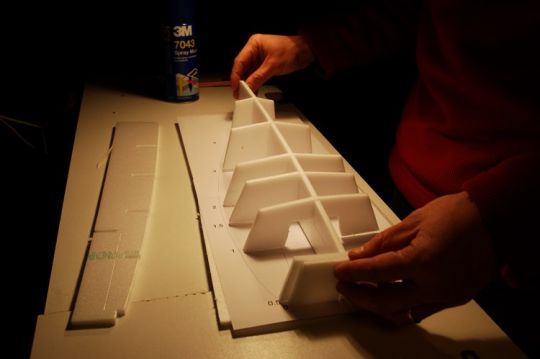
To keep it light (ready to sail , the MiniX weighs just 800 g), the hull is an extruded polystyrene/epoxy resin sandwich (laminated Depron). While this process is not impact-resistant (though...), the structure and sandwich make it very rigid. Together with the deck, the whole thing forms a kind of egg whose strength is astonishing. It's impossible to apply the slightest twist to the hull, despite its lightness (the bare hull weighs just 260 g).
Our yacht has a chine hull. But this doesn't detract from the look, as the chines are largely rounded and, combined with the straight bow, give the illusion of a beautifully shaped hull. When sailing close-hauled, the stern of the MiniX lifts off, limiting drag in the water.
Technical data
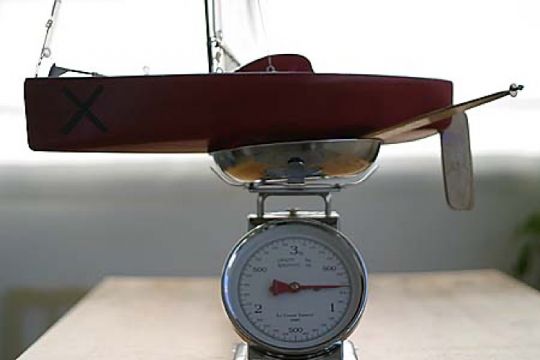
- Overall length (with rudder): 56 cm
- Hull length: 51 cm
- Width: 17.6 cm
- Draft: 25 cm (but this may change...)
- Air draft: 92 cm (mast: 86 cm)
- Operating weight (with sails, servos, batteries and keel ): 800 g
- Bare hull weight (without servos and keel ): 260 g
- Weight of ballast: 240 g (but may vary according to draught...)
- Wing surfaces: Jib= 6 dm² GV= 15 dm²
MiniX drawings
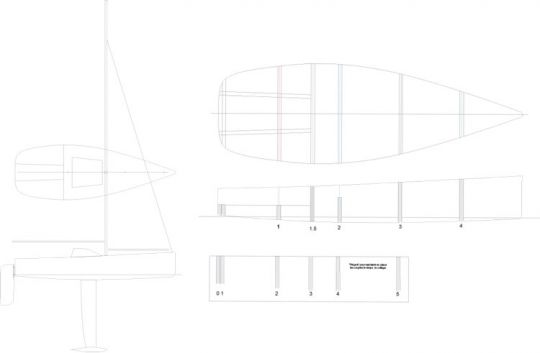
You can download the plans. They're simple and precise. We made our two boats by printing them on a basic A4 printer. Then we simply assembled the sheets by superimposing them and gluing them (repositionable spray glue) to Depron. A sharp cutter is all it takes to build the MiniX with precision.
Just one thing: we've put a lot of heart and soul into building this yacht. We'd be delighted if our experience could be put to good use. Don't hesitate, help yourself! But be so kind as to let us know with a little comment. We'd love to hear from you.
Here you can download the first part of the plan in A4 PDF format .
With this you already have the complete boat. Based on the construction photos, there's not much missing to build the whole MiniX. But since we're taking care of you, here are the sail plans too:
- Mainsail plan
Real sails with webs for their shape.
The construction budget
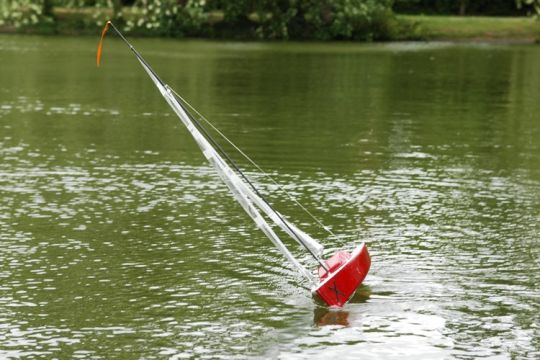
MiniX doesn't have to be expensive. We've always tried to find a way of "diverting" objects to make our project a reality. So it's hard to come up with an exact budget. It will be higher for someone who doesn't even own the basic tools , and much lower for someone who does it in the back of his already well-stocked workshop.
- 6 mm Depron sheet (2 sheets, 125 x 60 cm)
- Epoxy resin + fillers
- Glass fabric
- 4 mm plywood (a small piece for the keel , keel shaft and rudder)
- Carbon tubes (6 mm for the mast and 4 mm for the booms)
- GV carbon batten (1/10 mm in kite stores)
- Remote control servos kit ( first price: ?60)
- Florist paper for the sails (a good opportunity to give pleasure...)
- Blenderm (surgical tape), available from chemists, to join the sails. Cut the 20 mm roll in half to double its length.
In the end, we estimate a maximum budget of ?120 per boat (calculated in 2021).

Because a construction project like MiniX is above all a team project... And in a team it's good to be complementary.
The MiniX project went through a long phase of gestation - reflection - intellectualization - drawings - exchanges - helping hands to get to this stage. Today, it's sailing thanks to this pooling of skills. We hope you'll enjoy this project as much as we have. And we look forward to hearing from you in the comments or on the forum. Enjoy!
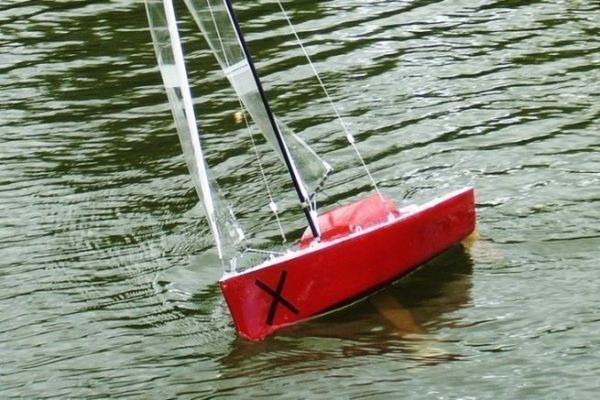
Frank Russell Design
R/c and model yacht design, plans, boats, sails., rg65 – 65.
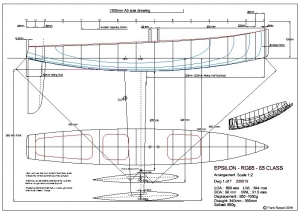
Epsilon RG65 – 65 2019: This design is based on the successful Ellipsis IOM concept, that of correct volume distribution rather than fashionable features with the emphasis on simplicity and efficiency.
After payment is made. I will email you the pdf file.
If you require another format: DXF, or DWG or printed paper plan, postage extra.
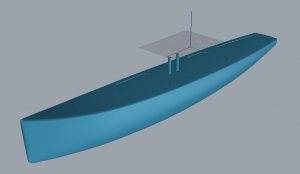
Epsilon Basic Hull and Deck STL: This is suitable for turning into 3D drawings for 3D printing. Can also be used as is for CNC.
You should be aware that you also need to purchase the plan of the Epsilon RG to build the boat as the licence is attached to the plan not to this drawing.
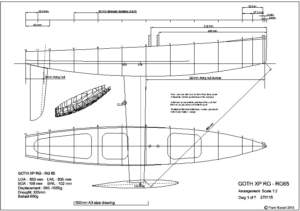
Goth XP RG – RG65 Plan is the 2015 development of the FREE Goth RG Plan.
After payment is made. I will email you the pdf file with 5 A4 and 2 A3 sheets.
If you require another format: DXF, or DWG, 2D or 3D or printed paper plan, postage extra.
The home of the worlds best R/C Model Aircraft Designers
UK Manufactured to order: Guaranteed Quality

Products search
Login FAQ
[email protected] +44 (0)1684 311682
- Unorthodox Aircraft
- X-List Plans (Aircraft)
- F/F Sport & Competition
- C/L Aerobatic
- Round The Pole
- All Aircraft Plans not yet categorised
- All Short Kit (Sets)
- Scale Short Kit (Sets)
- Sport Short Kit (Sets)
- Depron Short Kit (Sets)
- All Laser Cut Wood Packs
- Scale Laser Cut Wood Packs
- Sport Laser Cut Wood Packs
- All Additional Wood Packs
- Scale Additional Wood Packs
- Sport Additional Wood Packs
- Private & Trainer aircraft
- Transport Aircraft
- WW1 Aircraft
- WW2 Aircraft
- Static Aircraft Wood Kits
- All Aircraft Parts
- ABS Sets & Fairing
- Cowls & Nacelles
- Intakes & Rads
- Spats & Undercarriage
- Spinners & Prop Nuts
- Cliff Charlesworth Cowls
- All Canopies & Screens
- Cliff Charlesworth Canopies
- Jilles Smits Canopies
- Pat Teakle Canopies
- Guns, Sights & Cockpits
- All Materials
- Depron Foam
- All Covering & Tools
- DiaCov 1000 Covering
- Lightweight Tissue
- All Perma-Grit Tools
- Sanding & Filing Tools
- Rotary Tools
- Cutting Tools
- Screwdrivers
- Hex Wrenches
- Clamps & Pliers
- Airbrushing
- Lighting & Magnification
- Marking & Measuring
- Model Aircraft Covering
- RTF Aircraft
- ARTF Aircraft
- Free Flight
- Books & Specials
- DVDs & Blu-Ray
- Bargain Aircraft DVDs SAVE!
- Full Size Focus CD
- Line Drawings
- Model Aircraft Magazine Plans
- Cabin Cruisers
- Coastal Forces
- Fishing Boats
- Paddle Steamers
- Leisure Craft
- Scale Traditional Craft - British Isles
- Merchant Vessels
- Scale Traditional Craft - Non British Isles
- Passenger Ferries
- Steam Designs
- Patrol Launch
- Rescue & Lifeboats
- Working Boats & Ships
- Traditional Craft - British Isles
- Traditional Craft - Non British Isles
- Racing Sailing Boats
- Sport Sailing Boats & Yachts
- Scale Sailing Boats & Yachts
- Competition Powerboats
- Competition Powerboats - IC
- Competition Powerboats - Electric
- Easy to Build Boats
- Engineering
- Hydroplanes
- X-List Plans (Boats)
- All other Boat Plans & not yet categorised
- All Plan & Hull Sets
- Sailing Plan & Hull Sets
- Motor Boat Plan & Hull Sets
- David Alderton Plan & Hull Sets
- All Boat Short Kit (Sets)
- Sailing Short Kit (Sets)
- Motor Boat Short Kit (Sets)
- All Boat Laser Cut Wood Packs
- Sailing Laser Cut Wood Packs
- Motor Laser Cut Wood Packs
- Sailing Additional Wood Packs
- Motor Additional Wood Packs
- All Boat Additional Wood Packs
- All Static Model Boats
- Narrow Static Boats
- Motor/Steam Static Boats
- Sailing Static Boats
- Working Static Boats
- RC Boat Kits
- Ready To Run Model Boats
- Boat Fittings
- Electronics (Boats)
- Hulls (FG & ABS)
- Plastic Materials & Parts
- Airbrushing (Boats)
- Rotary Tools (Boats)
- Internal Combustion Engines
- Steam Engines & Plant
- Workshop Equipment
- Model Railway Plans
- All Engineering Plans not yet categorised
- Military Vehicles
- Maintenance Trays
- Scale Model Boats
- Scale Model Buildings
- OO Gauge Parts & Kits
- O Gauge Parts & Kits
- HO Scale Parts
- White Metal Fittings
- Airbrushing (Engineering)
- Rotary Tools (Engineering)
- Engineering DVDs & Blu-Ray
- All Model Aircraft Covering
- DiaCov 1000
- Sanding & Filing
- Aircraft Books & Specials
- Aircraft DVDs & Blu-Ray
- Bargain DVDs SAVE!
- Boat Books & Specials
- Boat DVDs & Blu-Ray
- Books & Specials
- Chargers & Leads
- Control Boards & Accessories
- Hot-end Parts/Kits
- Motors/Drivers
- Teeth, Wheels & Bearings
- VORON Parts
- Automotive Parts
- Crafts & Games
- Electric Scooters
- Medical / Health
- Shot Glass Trays

30 years Experience
Of Scratch Building & Modelling The Home of the Model Builder

Made in our Workshop
Laser Cut & Printed to Order Guaranteed Quality & Detail

Sailing Boats & Yachts
Showing 1–50 of 161 results

Varmint MM2129

Water Baby ‘A’ – Plan

Ardent – Plan + Article

Argus MM405

Ariel MM746 Static Sail Plan

BALLAST PROFILES

Banoosh MM1353 Static Sail Plan

Barge Yacht MM902 Static Sail Plan
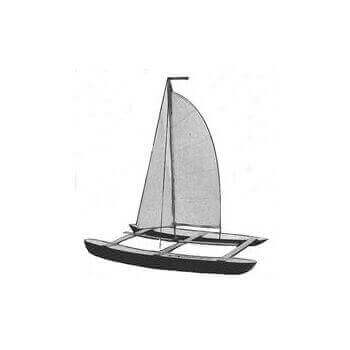
Birkenhead Catamaran MM1121

Bluebottle MM293

Boom Safar MM1327 Static Sail Plan

BRAINE AND VANE STEERING

Breakaway MM1369

Breeze (Bristol Channel Pilot Cutter) – By Dave Alderton

Brig SY34 Static Sail Plan

Brigantine SY33 Static Sail Plan

‘Hilda 2’ (Bristol Channel Pilot Cutter) – By David Alderton

Britannia – The Kings Racing Cutter – Plan
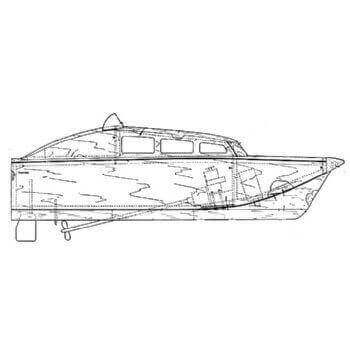
Buoy Cat MM728

Burutu & Bajima Tug

Caribee MM403

Celia Jane MM1365

“Gypsy Queen” Yarmouth Lugger

Galway Hooker – by Mike Mayhew of Waverley Models

China Boy MM501

Nookie Bear – Radio 10 Rater – Plan

Wing Ray – Plan by Vic Smeed

Comet Catamaran Plan MM1139

Crackerbox – Plan

Cumulus (Marblehead) – Plan & Article

Cutter Rig SY29 Static Sail Plan

Cygnette MM762


Dabchick – Plan

Dinghy MM153 Static Sail Plan
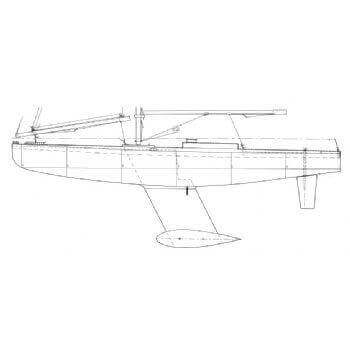
Duckling RC1344

Dutch Auxiliary MM240

Dutch Yacht MM1203 Static Sail Plan
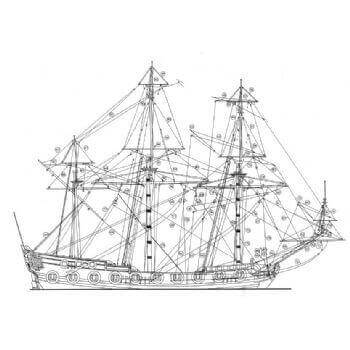
Early Sixth Rate SY24 Static Sail Plan

Enterprise Static Sail – Plan

Eowyn Of Rohan MM1181

- Patrol Launch (11)
- Scale Traditional Craft - British Isles (9)
- Scale Traditional Craft - Non British Isles (5)
- Cabin Cruisers (27)
- Coastal Forces (83)
- Fishing Boats (25)
- Leisure Craft (47)
- Rescue & Lifeboats (23)
- Merchant Vessels (51)
- Steam Designs (23)
- Passenger Ferries (12)
- Trawlers (41)
- Tug Boats (85)
- Warships (128)
- Paddle Steamers (12)
- Working Boats & Ships (148)
- Traditional Craft - British Isles (14)
- Traditional Craft - Non British Isles (7)
- Warship (4)
- Racing Sailing Boats (26)
- Scale Sailing Boats & Yachts (72)
- Sport Sailing Boats & Yachts (27)
- Easy to Build Boats (14)
- Engineering (21)
- Competition Powerboats (7)
- Competition Powerboats - Electric (7)
- Competition Powerboats - IC (9)
- Hovercraft (11)
- Hydroplanes - Electric (7)
- Hydroplanes - IC (7)
- Straight Runners (2)
- Submarines - Scale (18)
- Submarines - Sport (3)
- Unconventional Boats (16)
- X-List Plans (Boats) (20)
- All Boat Plans not yet categorised (149)
Filter by price
Average rating.
- Rated 5 out of 5 (2)
- Rated 4 out of 5 (1)

A Guide on How to Make Your Own RC Boat
This down-to-earth guide is for anyone who wants to know how to make a RC boat . It explains what parts, tools, and steps you need to follow to create your model. It’s much easier than most people think it is with an orderly approach. The first step is to decide what type of boat you want to build. The following sections break down the different boat types for consideration.
Before You Build Your RC Boat
There are several considerations before you choose an RC boat. First, you need to decide what type of vessel you want to construct. Next, is the type of hull, and then the power system. Let’s walk through each of these so that you can make well-informed decisions.
The three types of RC boats are:
- Scale boats
- Racing boats
Try to avoid anything that’s too difficult if you’re new. There’s plenty of time for complex models later.
#1 Scale RC Boats
An RC scale boat replicates a real-world vessel as much as possible—only smaller. There is no fixed scale. The finished model can be palm-sized or so big you need a trailer to transport it. It’s the close attention to details that gives these mockups their wow factor. RC modelers can build scale boats from kits or scratch, hence the term scratch building. More on that later.
#2 RC Racing Boats
RC racing vessels can be sailboats or speedboats (powerboats). These models are fast and agile on the water and used for fun or serious competitions. Your boat choice depends on purpose and expectations. Racing boats fall into categories based on their power systems and type of hull. Some racers are only for smooth surfaces whereas others can ride the waves on choppier waters.
#3 RC Sailboats
Fans of radio-controlled sailboats make them for racing or leisure. It’s the latter that appeals most to those at the entry-level. The designs can be simple, which makes them great projects for novice builders. These wind-powered vessels typically have one or two sails controlled by winch servos. A second servo controls the steering and drop-keels (retractable fins) for extra stability.
OK, so that’s the three popular types of RC boats to build. There are many sub-categories to each, but at least you have a starting point. Again, keep designs simple if it’s your first project.
Types of RC Boat Hull
Now let’s look at the four hull types. It’s important to know about hulls and how they work. The idea is to choose one based on your experience level and the kind of water you intend to drive or sail on.
The 4 RC boat hull types include the following:
- Hydroplanes or hydro
- Monoplanes, also mono or V hulls
- Catamarans or cat
- Tunnel hulls
#1 Hydroplane Hull
The hydroplane hull is made for speed, typically on flat water, and thus suited for racing RC boats. They’re fast, agile, and able to make tight turns. This type of hull is best suited for advanced users. Below is an example of a ready to run (RTR) preassembled hydroplane to illustrate.
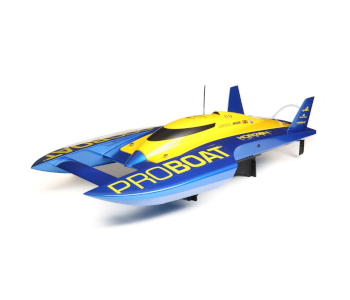
Pro Boat UL-19 RTR Brushless Powered Hydroplane
#2 Monoplane Hull
Monoplanes are the right choice for driving boats on choppy water and over waves. They’re fast too, though not as fast as hydroplanes. These are V-shaped hulls that can be either deep or shallow. The stability of a deep-V design makes them a much better choice for newbie racers. Below is an example of a ready to run (RTR) preassembled deep-V monoplane to illustrate.

Pro Boat Stealthwake RTR Brushed Powered Deep-V
#3 Catamaran Hull
Real-world catamaran or cat hull designs are typically for off-shore race boats. They have two outer projections called sponsons and a tunnel through the center. These hulls are faster and handle better than other types. Cats are an ideal choice for rough water because of the extra stability. The downside for that added stability is an increase in drag.
Below is an example of a ready to run (RTR) preassembled catamaran to illustrate.
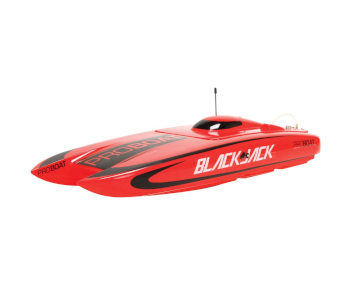
Pro Boat Blackjack RTR Brushless Powered Catamaran
#4 Tunnel hulls
Tunnel hulls are the slowest of the four but still nippy. They do handle well and are the perfect choice for driving on shallower water. These types of boats have two planing hulls that allow the craft to rise upward and glide or skim over the surface. The tunnel hull design has a solid center that traps air. Below is an example of a ready to run (RTR) preassembled F1 Tunnel hull powerboat to illustrate.
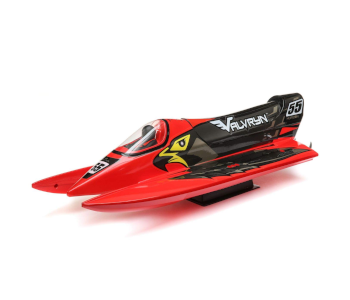
Pro Boat Valvryn RTR F1 Self-Righting Tunnel Hull Powerboat
RC Boat Power Source Options
Next, we need to look at ways to power your new RC boat. There are three options here, namely:
- Electric power (battery)
- Nitro power
#1 Electric Powered RC Boats
Battery power is the most common fuel source. It’s also the cleanest and needs little maintenance. Electric-powered R/C boat motors are much faster than they used to be. They also enjoy better run times and quicker charging than earlier models. Battery power is quieter than gas too, and that allows more choices on where you can play. It’s wise for newbie RC boat builders to opt for electric.
#2 Nitro Powered RC Boats
Nitro powered RC boats are driven by something called a glow engine and a special fuel mixture. The fuel uses a blend of nitro-methane, methanol, and oil, usually the castor variety. The mix ratio varies depending on the engine. Nitro boats are quite fast and well-protected from water thanks to a hydrostatic lock. These engines produce realist sounds and smoke.
Nitro-fueled engines are an excellent choice if you love to tinker, but terrible if you don’t. They need lots of tuning and regular maintenance. The engines are also very loud compared to electric.
#3 Gas Powered RC Boats
Gas-powered RC boats are big and powerful, but they’re also incredibly noisy. Using gas for a model rewards it with long running times on a full tank of fuel. However, it can be a messy business, and the engines do need regular maintenance. They’re easy to operate once set up, though, and they require less tuning that nitro. Powerful gas engines are also useful for driving on rough water.
The rest of this guide looks at the logical steps on how to make an RC boat.
RC Boat Kits Vs. Scratch Building
RC boat kits are an excellent choice for the raw novice as they’re the jigsaws of the modeling world. Everything you need to build the boat structure is in the box. A decent kit should come with detailed instructions. It shows you how to construct the model using steps and illustrations. Look for user reviews if you’re not sure. Some kits have vague instructions or suffer from poor translations.
Look for helpful online video tutorials instead if the instructions are bad. YouTube is the best place, but there may be others. Kits are not so easy to find for RC boats, and the choices are few compared to scratch building plans. Another option is to learn to build by the kit-bashing route (see next)
The Kit (Model) Bashing Route
Kit-bashing is an excellent progression toward scratch building. It works by creating an RC boat using the parts and components from commercial kits. The idea is to create a unique RC model boat from these pieces or use them to customize an existing project. The bashing approach is hands on. It teaches you all about scale modeling in a fun and enjoyable way.
Consider kit-bashing if you’re an RC fan who happens to have a bunch of spare parts sitting in boxes. RC enthusiasts are usually reluctant to throw stuff out with old or broken models. Ask others if they can donate some parts if you’re a total newbie.
Below are a few books to consider on RC model boat building, upgrades, and maintenance.
Building and Racing Radio Control Sailboats
EDITOR’S RATING: 4.8/5
This book makes an enjoyable read for anyone into radio control sailing. It uses a step-by-step format to show the reader how to get started. There are chapters on selecting a model sailboat; building from kits, and scratch building. It also shows how to install radio systems, sails, and winches, etc. It’s not a cheap book, but it will last you a lifetime once you have it.
Electric RC Boat Upgrade & Maintenance
EDITOR’S RATING: 4.7/5
A boat builder’s job is never finished. Enthusiasts love to tweak and tinker their models, and that means upgrades and maintenance. This book is for beginner to intermediate level RC’ers.
Model YACHT Construction and Sailing – Made Cheap and Easy!
EDITOR’S RATING: 4.4/5
This is a fun book aimed at folks who are not yet sure whether they want to build an RC boat or not. It gives step-by-step illustrated instructions on how to make a micro-sized RC sailing yacht. The entire process uses household tools and shouldn’t cost much more than ten dollars.
The Beauty of Scratch Building
RC boat kits have their place, but most beginners use them as stepping stones to scratch building. After all, a kit is not unique to you, but a custom model built from scratch most definitely is.
Scratch building is the way forward if you have the time and patience. There are many boat plans and blueprints around for free download or a nominal fee. Building an RC boat from scratch gives you total freedom to be as creative as you want. That means you can produce a model that no one else has. It can save you money too, but it can also take a long time depending on the model and modeler.
Where to Find RC Boat Plans
Below are examples of the type of RC boat plans and building formats available. Join an RC forum and ask for help if you can’t find the plans you want via the search engines.
RC Groups Forums
RC model building is a social pastime where people swap ideas, give advice, and share tips. The RCGroups forum is an excellent place for all the above. You can browse for free, but you need to join to search. There are many threads (discussions) on this site for RC boat plans and RC building.
Plans to Make an Easy & Fast RC Boat!
This site has downloadable RC speedboat plans. It also has 19 online stepped instructions on how to build the boat. Everything is on one scrollable page with large photos to support the text. There’s a discussion going on at the end of the page with some useful feedback from visitors.
RC Cabin Cruiser Plans
These plans are ideal for entry-level scratch builders. The boat is mostly balsa wood, and the tools needed to construct the model are basic. The cost at the time of writing was around $8.
Electric Ski Cruiser
These plans are for Build a radio control electric racing boat. They include notes and full-sized printed plans. It’s a personal project, but you’re free to modify the plans and tweak the model as you wish.
The Right Tools for the Job
Make sure you have the right precision tools to build your RC boat. Proper tools make the work so much easier and more enjoyable. The wrong tools make the job frustrating, and you risk damaging the model or yourself. There are plenty of decent kits at reasonable prices. Look at what you already have, and then make a list of what you need extra.
The examples below show basic, intermediate, and pro-level options, though there are many others. Try not to skimp here as high-quality tools will last a lifetime.
Rustark 9 Piece Gundam Model Toolset | Basic Kit

EDITOR’S RATING: 4.5/5
The Rustark 9 piece Gundam model toolset is a basic kit that costs only a few dollars. It’s a lightweight kit that comes with a plastic storage box. The tools include:
- 1 x side pliers
- 1 x manual model tools file
- 1 x penknife
- 5 x spare blades
- 1 polishing cloth
- 2 x double-sided polished bar
- 2 x tweezers
Remember, this is only a starter pack that doesn’t cost much money. You may want to invest in the higher-quality, more comprehensive toolkit if you decide to embrace RC boat building.
Hobbypark 11-in-1 Pro RC Box Set Tools | Intermediate Kit
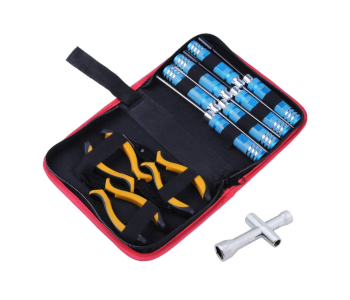
The Hobbypark 11-in-1 Pro Box Set contains some essential tools for RC model builders. The high-performance metal used is durable and long-lasting. This set includes the following items:
- 1 x hex screwdriver 1.5mm
- 1 x hex screwdriver 2.0mm
- 1 x hex screwdriver 2.5mm
- 1 x box spanner 4.0mm
- 1 x box spanner 5.5mm
- 1 x Philips screwdriver 0#+
- 1 x slot screwdriver 1#-
- 1 x pliers (needle-nose)
- 1 x pliers (diagonal)
- 1 x Pliers (ball link)
- 1 x Hexagon Sleeve Wrench (4/5/5.5/7mm)
This kit is ideal for building, maintenance, and repair. It doesn’t include saws or drill bits, though.
X-ACTO Hobbytool Set Deluxe 30 Piece Set | Pro Kit
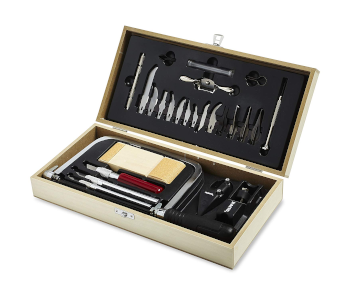
The X-ACTO Hobbytool is a 30 piece, high-quality modelers toolkit. It has precision tools to saw, whittle, cut, and carve a variety of materials. The set includes the following items:
- 3 x X-ACTO knives: #1/2/5
- 11 x X-ACTO blades: #2, 7/11/13/16/17/19/22/24/26/28
- 1 x jeweler’s screwdriver
- 1 x block plane
- 1 x block sander
- 1 x spokeshave
- 1 x balsa stripper
- 2 x routers
- 1 x pin vise
- 3 x drill bits
- 1 x coping saw (includes blade)
- 1 x wood storage box
These are three examples of the toolkits available, but there are many others. It can be hard for the first-time builder to know what they need for their radio control model. Proper preparation makes everything so much easier, so ask in RC forums if you need some guidance.
Other Tools to Consider
There are a few other tools to consider. A building board to lay your plans on, to work, and organize parts as you build is essential. This board is not your workbench—it goes on top of it. The board can be whatever size and material works best for you, and you can make your own or buy a purpose product. Again, seek help from fellow modelers if you’re unsure.
You may need electrical devices depending on the type of boat you build. There are various other things too. Here’s a breakdown of some potential tools and items to consider.
| Building board | | |
Most homes will at least have some of the tools needed for RC model boat building. Find out what you need extra and get everything prepared before you start to build.
How to Build Your Firsts RC Boat
I use a basic RC vessel here to illustrate the building basics. It’s a broad approach and doesn’t refer to any particular model. The principles are similar for most boat building. Despite that, size, complexity, and skill level will differ between projects. The model below is a simplistic electric-powered vessel. I base this example on sourced parts, so there are no tutorials on how to make individual pieces.
The parts of your RC boat from rear (R) middle (M) to front (F) are:
- Servo horn (R) servo rod (R–M) servo (M)
- Battery (R)
- Receiver (F)
OK, now let’s look at how it all goes together.
Choose the Hull
The hull of your boat is what everything else works around. You may want to make one or buy a ready-made product that fits your design. Either way, choose a hull right at the start of the project. Refer to the ‘types of hull’ section if you need a recap.
The Electronics
The hull and electronics are the most expensive items on an RC boat builders list. Despite that, they don’t have to cost the earth, especially if you start with a toy-grade project. The electronics include:
- Rechargeable battery
- Battery charger
- Radio system (transmitter/receiver)
Attach the motor
The motor goes at the bottom rear of the model boat, usually under where the battery sits. Fix it in place using purpose modeling glue and then attach the prop.
Waterproof the boat’s openings
It’s time to waterproof the boat’s opening (hatch). It’s a vital step as water always finds a way in if there is one. There are different approaches to this, and no two boats are the same. However, the favorite way is to build a wall around the opening. It’s what we call ‘coaming’ in the RC world, and it’s a raised edge that surrounds the open hatch.
Balsa strips work well for coaming—which must be slightly proud of the boat’s deck. You can then build a simple removable hatch to seal the opening. Model boat builders use all kinds of creative ways to seal the openings. Seek help on one of the forums if you need guidance.
Attach the steering servo
Servos come in many different shapes, weights, and sizes, but they all work the same basic way. A servo’s arm should correspond precisely with the transmitter’s stick or slider movements. The servo is necessary for steering your RC vessel, and it goes in the hull towards the front of the boat.
There are various ways to install the servo into the hull. The three most common are:
- Double-sided tape
- Glue directly to the bottom of the hull
- Glue wood blocks inside the hull and screw the servo to the blocks
The first two options are okay if you build a cheap, toy-grade product as a first experiment. Option 3 is a better approach for costlier, high-powered boats. You can also make a purpose servo mount with brackets and screws for added security. This way you can access and remove the servo easily should you need to replace or maintain it.
Attach the boat’s rudder
You can make the boat’s rudder or buy one. You must take it apart to install it if you purchased a rudder assembly. Make a note of the parts and how they go together as you strip it down.
The rudder goes at the back of the boat, fastened outside its hull. You need to drill a hole for the rudder tube on the model’s center line just behind the prop. The trick here is to use a drill bit that’s only slightly larger than the pipe. This is where your precision tools come in handy. Here are the remaining steps assuming the above went as planned.
- Place the servo horn on the top of the rudder tube
- Use a screw to secure the servo horn
- Attach the servo rod with Z-bends at both ends
That’s it. Your rudder assembly should now be in place and ready to go.
Attach the battery pack
You model RC boat is now ready for its battery pack, and there are two main options here. One is to glue the rechargeable battery to the bottom of the boat’s hull. The downside to gluing is that the battery becomes fixed. That means you must wait for it to charge before you can use the boat again.
Velcro is a better method if you want to be able to swap batteries over. Glue one piece of quality Velcro to the bottom of the hull and the other to the battery. Space might be tight, so make sure the servo rod doesn’t make contact. Now connect the battery cable to the power plug.
Attach the receiver
Now it’s time to glue the receiver into place. It goes at the front (the bow) of the boat.
Seal the boat
You can waterproof your RC boat using various sealants depending on the material used. Some modelers like to waterproof the inside and outside to be extra safe. For wood hulls, Z-Poxy Finishing Resin Adhesive is a popular choice. ABS hulls do better with a clear waterproof silicone like DAP . Ask on forums if you’re unsure, and let others know some details about your boat and its materials.
Good luck with your next project.
Leave a Reply Cancel reply
Your email address will not be published. Required fields are marked *
Sign me up for the newsletter!

Achieve Your Potential in Competition IOM Sailing
Vickers RC Sailing

Producer of the V11 Competition International One Metre Design by Ian Vickers.
Our workshop opened in 2014 with the V8 IOM. Since then we have produced hundreds of hand crafted IOM yachts in the Vickers design range. Yachts that have helped IOM competitors around the world achieve their potential and exceed expectations in competition.
We are currently offering the V11, the innovative design that finished 3rd at the 2019 World Championships in Port Alegre, Brazil.
When our clients return, they know they are tapping in to smart, competitive technology in IOM design and build. Stiff, Lightweight boats, that are Easily Assembled, Fast and Forgiving to sail. Join the fun!

Improve your results at the club and the regatta, with the fast and forgiving V11 from Vickers RC Sailing

Set Up and Sail
The V11 detailing is simple but effective. In conjunction with the V11 Set Up Guide, assembly is straight forward, and vital tuning information assists you to quickly understand and master your V11's potential

Vickers RC Sailing build processes are well refined and thought out.
Our boats are light, stiff and clever, keeping to a simple and effective philosophy around detailing
The V11 design is a hull, foils and bulb package to compliment the full range of conditions experienced in RC Sailing. The hull design has full volume forward and features the familiar chines and tumblehome of the modern IOM for reduced weight and windage, as well as good tracking characteristics. The V11 features our peaked style foredeck for efficient water shedding when buried downwind and a geometrically strong shape for the forestay and mast ram areas.
Foils are slippery and strategically positioned with the rig to balance the yacht. The V11s forgiving balance through the wind range, allows the skipper to focus on the race at hand, and not rely on micro steering to maintain a consistent VMG.
The rig sits solid on its deck stepped mast step, complimented at deck level with an encapsulating mast gate arrangement over the mast ram. The rudder tube is rigidly supported inside the moulded servo tray.
Hull construction is from E-Glass Fibreglass Cloth and High Grade Epoxy Resin.
The foils are Carbon Fibre Layup with High Grade Epoxy Resin.
Paint system is a 2 pot Urethane and the boat is thoroughly post cured before finishing.
The V11 Features-
Plastic main hatch access.
Ready to accept RMG Winch and Standard sized Rudder Servo
Bow Bumper attached.
Hardware is Bantock including an adjustable mast ram, adjustable mainsheet post and tiller arm.
All necessary fittings attached for standing and running rigging.
The V11 comes out of our workshop in Beach Haven, Auckland New Zealand and is ready to accept rigs and electrics.
We also make sails that can be added to the order, or ordered separately.
So hit the enquiry button to discuss delivery times and options.
We are ready to help.

Essential to success in sailing comes down to the Rig and how it is set up and tuned. The V11 comes with a Set Up Guide that covers all the expert information needed to set up like the guns. It specifies the hardware, construction and tuning information to get your rig and sails set up and sailing near optimum straight off the bat, so you can enjoy your racing and punch above your weight.
Include Sets of sails from Vickers RC Sailing and enhance the experience.

Vickers Rc Sailing is back taking orders again for the V11
We look forward to hearing from you
Thanks for submitting!

- Vanquish 65
- Mini Maniac
- RG65 Appendages
- Maniac MK II
- IOM Appendages
- Marblehead Class
- Marblehead Appendages
- RT65 Ragnarok
- RT65R Armageddon
- RC65 Adrenaline
- ST65 Sowelu
- Mini40 / F48 Class
- Nightmare X
- Nightmare MK VIII
- MultiOne Class
- FireDragon 1000
- DIY Sail Winch
- Rig Building

Click the pictures to expand

Browse the pictures using the slider, click the center picture to expand

Browse the pictures using the slider, click the center picture to view the video clip.

Occasional ruminations, experimentations, and observations on the art and nonsense of building wooden radio control sailboats. Thanks for visiting!
Search This Blog
R/c sailboat builds.
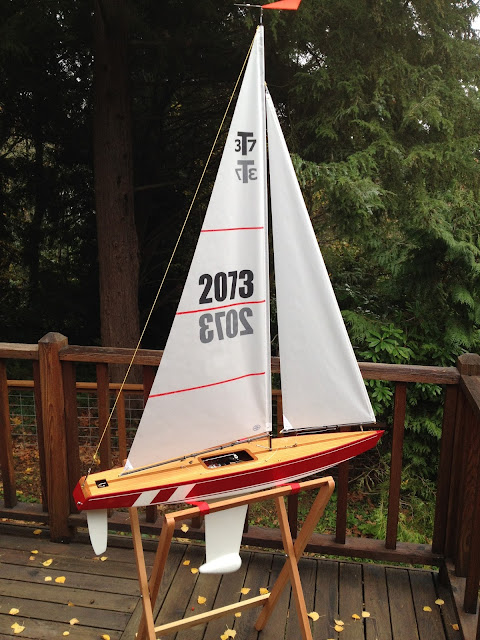
The "Salish" boat is fantastic. I have been looking into building a T-37 (which is how I found your blog), but it is hard to look beyond the bottom of the blue boat.
Thanks Chance! Good luck on whatever you end up building.
Download and Share Free Model Airplane and Boat Plans ...
P-51d mustang model airplane plan - aerofred.com, download and share free model airplane and boat plans., pzl m 15 belphegor plans free download - aerofred.com, champion 7eca "citabria" model airplane plan - aerofred.com, republic xf 84h thunder screech model airplane plan - aerofred.com, cad foam plans aerofred.com - download and share free model ..., f5 plans - aerofred - download free model airplane plans, speedy bee plans free download - aerofred.com - aerofred.com, lockheed l 1011 tristar plans free download - aerofred.com.
- Gardening Gloves
- Garden Spade Shovels
- String Trimmers

How To Clean a Leather Purse: The Expert’s Guide to Maintaining Your Bag’s Beauty
How to clean candle wax off floor: a safe and effective guide for hardwood floors, how to propagate prayer plant: a step-by-step guide to success, how to get slime out of carpet: effective methods for removing slime – a step-by-step guide, 19+unusually gorgeous baby girl room ideas, 19+ baby boy room decor ideas & plans [pictures], 17+ master bathroom remodeling decor ideas [pictures], 21+ basement kitchen ideas & plans [pictures].

14+ DIY Remote Control (RC) Boat Plans [FREE]
My nephew and I had been wanting to build a remote control boat for a while. We finally got around to it one weekend, and it was a lot of fun.
Table of Contents
We started by choosing the right boat. We wanted something small and easy to control, so we went with a basic monohull design. We also chose an electric motor, since they’re less powerful but easier to use and maintain.
The next step was to choose the right battery. We went with a sealed lead acid battery, since they’re cheap but have shorter run times.
View this post on Instagram A post shared by Max Imagination (@max.imagination)
Once we had the boat assembled, we took it out for a test run on our local lake. The boat performed well, and my nephew had a blast steering it around.
We’ll definitely be going out again soon to enjoy some more time on the water.
Making remote control boats is a fun and rewarding hobby. The boat and its remote controls can be quickly built as a single project. This DIY project can be done by almost all people, even those that do not have any building experience.
To turn this project into something extraordinary, the internals of the watercraft need to be mechanically designed and built with care to ensure durability.
DIY Remote Control Boat Ideas & Designs
1. home-made remote control boat.

If you’re thinking of making a remote control boat, there are a few things you need to consider. The first is the size of the boat. You’ll need to take into account the dimensions of your pond or lake, as well as the wind conditions. If you’re going to be sailing in open water, you’ll need a larger boat that can handle choppy conditions.
2. Remote Control Boat With Fusion360

The second factor is the type of motor. There are two main types of motors for remote control boats: electric and gasoline. Gasoline motors are more powerful, but they’re also more expensive and require more maintenance. Electric motors are less powerful but easier to use and maintain.
3. Remote Control Knex Boat

The third factor is the type of battery. Again, there are two main types: sealed lead acid (SLA) and lithium ion (Li-ion). SLA batteries are cheaper but have shorter run times, while Li-ion batteries are more expensive but have longer run times. When choosing a battery, you’ll need to take into account how long you want to be able to run your boat for.
4. Remote Control Airboats for Kids

Finally, you need to consider the type of controller you’ll use. There are two main types: radio controlled (RC) and infrared (IR). RC controllers use radio waves to communicate with the boat, while IR controllers use infrared light. IR controllers are typically cheaper, but they have shorter range than RC controllers.
5. Building a Self-Driving Boat

Radio-controlled (RC) boats are a fun and exciting hobby for people of all ages. Whether you’re interested in racing or simply exploring the waterways, there’s an RC boat out there that’s perfect for you. But with so many different types and models to choose from, how do you know which one is right for your needs?
6. DIY Arduino Catamaran

One of the most important things to consider is the size of the boat. RC boats come in a variety of sizes, from small bathtub toys to full-sized racing hulls. If you’re just starting out, it’s probably best to choose a smaller boat that you can easily control. As you become more experienced, you can move up to larger boats with more powerful motors.
7. How to Make a DIY Remote Control Airboat

Another important factor to consider is the type of hull. The two most common hull types are monohulls and catamarans. Monohulls are traditional boats with a single hull, while catamarans have two separate hulls connected by a platform. Catamarans are generally faster and more stable than monohulls, making them ideal for racing. However, they can be more difficult to control, so they may not be the best choice for beginners.
8. How To Make Remote Control Boat at Home
When choosing an RC boat, it’s important to think about what you want to use it for. Are you interested in racing? Or do you simply want to cruise around your local lake? Once you know how you want to use your RC boat, it will be much easier to narrow down your choices and find the perfect one for your needs.
9. How To Make a Mini RC Boat
RC boats are a great way to have fun on the water. Whether you’re racing against friends or just exploring your local lake, these little boats can provide hours of enjoyment. Here are some tips for getting the most out of your RC boat:
Choose the right boat. There are a variety of RC boats on the market, from simple dinghies to high-speed racers. Pick one that suits your needs and Preferences.
10. How to Make a Remote Control Boat
Get familiar with the controls. Before you take your boat out on the water, make sure you understand how to operate the controls. This will help you avoid collisions and other accidents.
Practice makes perfect. Don’t be afraid to experiment with your boat in different conditions. The more you practice, the better you’ll become at handling it.
11. How To Make a Fast RC Boat
4. Have fun! Ultimately, that’s what RC boating is all about. So relax and enjoy yourself!
How to make a remote control boat
1. design and prepare the shape of the boat.
Design and prepare the shape of your boat. The design needs to be planned before any building can take place. Deciding on the design early can ensure that it will be built correctly. Work on a plan for at least one week to get your ideas together.
The simplest way to design the design is to draw on paper using pencils or markers. A more professional method would use Computer-Aided Design (CAD) software which can help with the design process.
2. Design the electronics
Now that the boat’s shape is done, it is time to design the electronics. Please list all your components and decide the best way to put them together. Remember, this task does not have to be complicated and can be completed with ease by following these easy steps:
3) Design & install the onboard controls
Now that you have designed your electronics, it is time to work on the onboard controls. Again, design your electronics to serve the purpose that you want them to.
4) Assemble the electronics for testing and troubleshooting.
Once you have designed all of your electronics, it’s time to sell them together so you can test them before you do any soldering on the boat itself. This step is essential to prevent unexpected problems while building the boat itself.
5) Assemble and install electronics into the boat hull.
Before wiring can be done inside the boat, the electrical tape should be wrapped around all exposed wire connections. This keeps wires from shorting out because they are touching each other while assembled in the boat’s hull.
6) Wire the electronics to their respective locations.
Now that the electronics have been assembled, connected, and wrapped in electrical tape, it is time to wire them into the boat. Begin wiring by starting with a power source of some sort, typically a battery pack. These are easily installed later, so do not worry if your boat will not have one.
7) Assemble the motor, wiring, and electronics onto the boat hull.
Next, it is time to assemble the motor and wiring onto the boat. This is a simple process. The size of your boat will determine how difficult this will be for you. Use your hands to firmly push the motor into place with the wires running through it to ensure that it does not fall off during this process or any after-step.
8) Install float switch and ignition circuit.
The next step is to install the float switch and ignition circuit. The float switch should be placed on top of the motor, as seen in the picture, so that a slight current can pass through it from one side to the other.
9) Install steering controls and electronics onto the boat hull.
It is time to install the steering controls and electronics onto the boat. This step is not a complicated process but will require some force as you push parts into place.
Apply electrical tape to any electrical connections as needed during this step. Once all connections have been made and secured, you can begin wiring inside the boat.
10) Install propeller into boat hull and wiring.
The next step is to install a propeller onto your craft, with wires running through it to prevent any accidental shorts or touching of wires causing damage during use.
Next, wire your electronics for remote operation before proceeding with this step due to potential battery issues that may arise later on in the operation of your watercraft.
Tips for keeping your remote control boat in good condition
Remote control boats are a great way to enjoy the water and have some fun, but they require some basic maintenance to keep them in good condition. Here are a few tips:
- Rinse off your boat after every use. This will help to remove any salt or other chemicals that could damage the paint or other parts of the boat.
- Store your boat in a dry place when not in use. This will help to prevent rust and corrosion.
- Check the batteries regularly and replace them as needed. This will ensure that your boat has enough power to run properly.
- Inspect the hull of your boat regularly for cracks or other damage. This will help you to identify any potential problems before they become serious.
By following these simple tips, you can keep your remote control boat in good condition and enjoy it for many years to come.
So there you have it, the basics of building your remote control boat from scratch. It is not as complicated as it may seem and can be easily accomplished by anyone who decides to build one of these boats.
These are just some basic steps in making a remote control boat, and there are many more ways to make your unique model that others will recognize for years to come.

Hi, my name’s Elena Coolidge. I’m a DIY enthusiast who loves building fun woodworking plans. These DIY plans are fun hobby projects for enthusiasts or even more advanced builders that want to build things like bunk beds, end tables or even a duck box!
RELATED ARTICLES MORE FROM AUTHOR

- Post Sitemap
- Privacy Policy
- Terms of Service
- New Sailors Guide
- SAILSetc DRAWINGS
- 3D PRINT A YACHT !
- MAST, BOOM & RIGGING PARTS
- RIGGING Wire/Spectra/Dyneema
- HULL & DECK FITTINGS
- VANGS - GOOSENECKS
- BOOM SECTIONS
- MASTS Alum & Carbon Fibre
- RIG KITS & RIG PLANS
- FINS AND BULBS
- BOATS - KITS & PLANS
- RG65 - MICRO MAGIC - Parts
- SAILS & SAILMAKING
- WINCHES & DRUMS
- RADIOS SERVOs BATTERIES etc
- POND YACHTS & PARTS
- ACCESSORIES, COVERS & MISC.
- FASTENERS Screws, Bolts, Nuts
- SPARE PARTS
- CLEARANCE ITEMS
- FREE Boat & Rigging Plan Links
- PARTS DRAWINGS
- Print your own CATALOGUE
- Shipping Info
- Privacy Policy
- Conditions of Use
- Newsletter Unsubscribe
- Create Account
- Shopping Cart
| | :: :: FP1 FREE PLANS for IOM - See details for weblinks to free plans Write Review page for details on building the mould and the hull of the NOUX 2 in the photo above. Note unless you are planning to build multiple hulls, or require a moulded fibreglass hull there is no need to build a mould, you can just make a planked hull from the drawings. Remember to allow for planking thickness when cutting frames out. and scroll down
Reviews may require prior approval before they will be displayed |
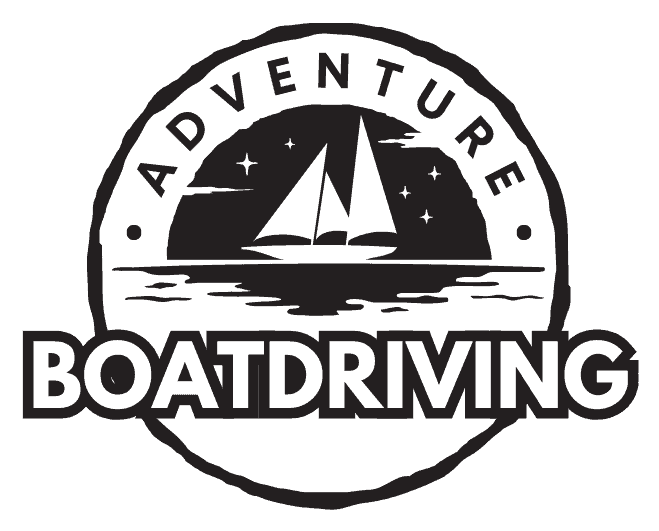
17 Homemade RC Boat Plans You Can DIY Easily
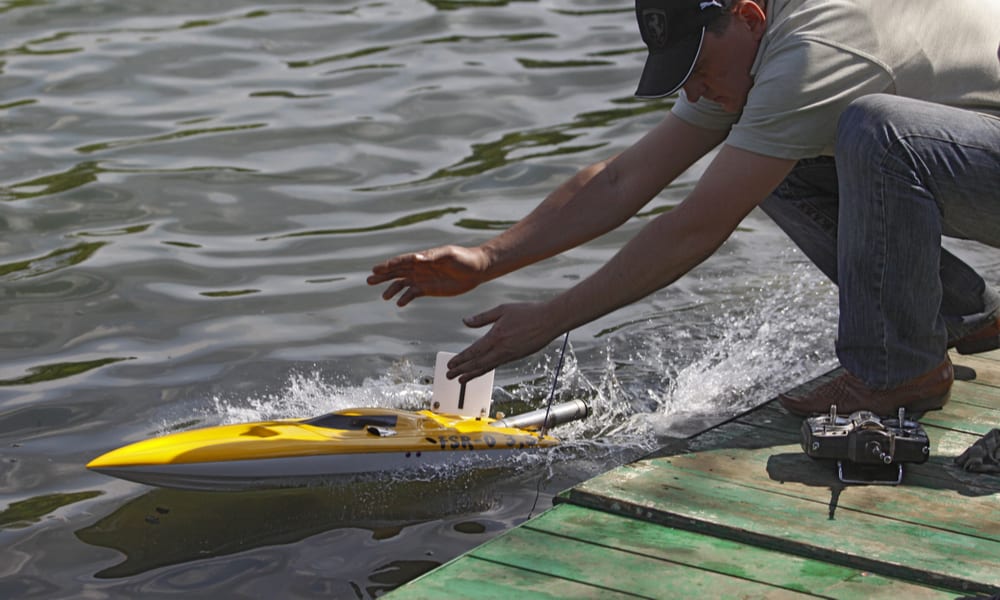
DIYing an RC boat can seem a bit scary at first, especially if you’re a DIY noob. But if you have a proper plan, tutorial, and a basic grasp on electronics, building an RC boat is a great DIY fun project for weekends.
Be it for making your kids happy or pleasing your inner boat-fanatic child, here we’ve collected 17 best DIY RC boat ideas available on the internet for you. From a simple foam RC boat to an impressive supply boat, we’ve covered it all! Let’s begin!
Table of Contents
1. How To Make Fast Twin Motor RC Boat. Diy Foam Model Boat
2. rc boat, 3. how to make a boat – amazing rc diy toys – boat, 4. a guide on how to make your own rc boat, 5. build an rc rigger boat | pro boat mini outrigger build pt.1 hardware & electronics install, 6. how to make a homemade remote control boat, 7. how to make a big rc boat, 8. how to make a rc boat trailer [5 easy steps], 9. making big rc yacht boat with foam, 10. how to make an rc boat out of an rc car: a step-by-step guide, 11. how to make remote control boat at home, 12. build a simple rc boat hull, 13. how to make fast rc boat. diy single motor rc boat, 14. how to make an rc boat with brushed dc motor : introduction, 15. build a big rc bait boat – v2, 16. build a simple arduino rc boat that can be controlled wirelessly using 433 mhz rf modules, 17. rc supply boat build build from scratch.
No chitter-chatters; straightforward to the tutorial! All the supplies of this video tutorial by KendinYap are mentioned in the description box, and all the dimensions are clearly displayed in the video itself.
With proper tools and supplies, even a beginner can follow along with this tutorial. The comment section is filled with encouraging adjectives ‘nice’, ‘great’, ‘awesome’, ‘cool’, and so on. Make sure you check this tutorial out. You won’t regret it!
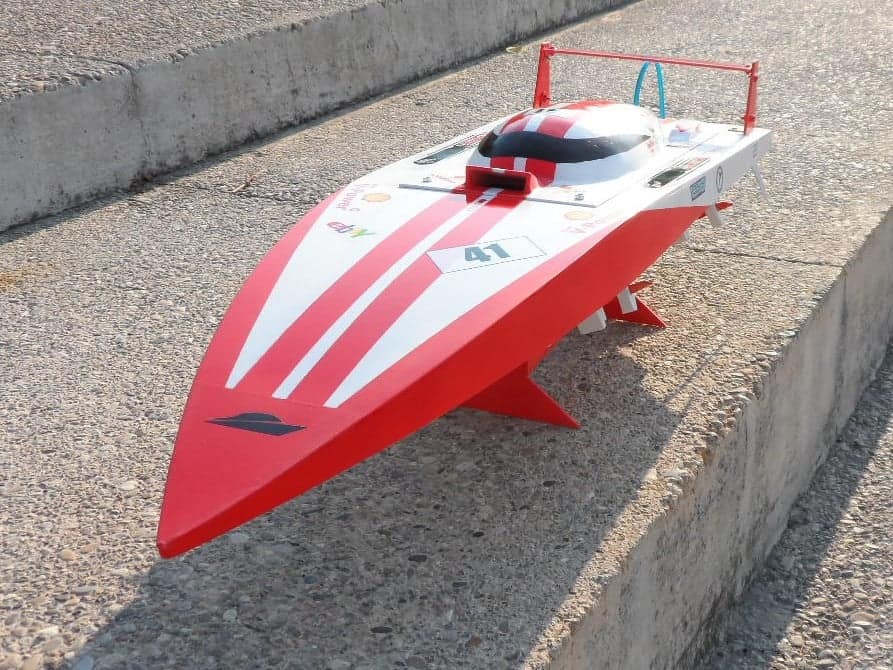
Francisco Molliner from Instructables guides you through the process of building an RC boat in 19 steps in this blog post. The downloadable plan for the DIY project is listed in section 1, and all the materials you need are listed in section 2 of the post.
Not only has the blogger elaborated all the steps, but he also has shared several great tips throughout the blog.
Check More Details
Replicate the RC boat design by Make Your OWN Creation in order to DIY a fantastic RC boat for yourself. All the supplies and purchase links to them are mentioned in the description box.
If you plan on going forward with this tutorial, make sure to check the comment section as it is filled with positive feedback. For instance, Neil Crompton proposes that the boat would go faster if the air outlet is angled so that it is fully submerged in water.
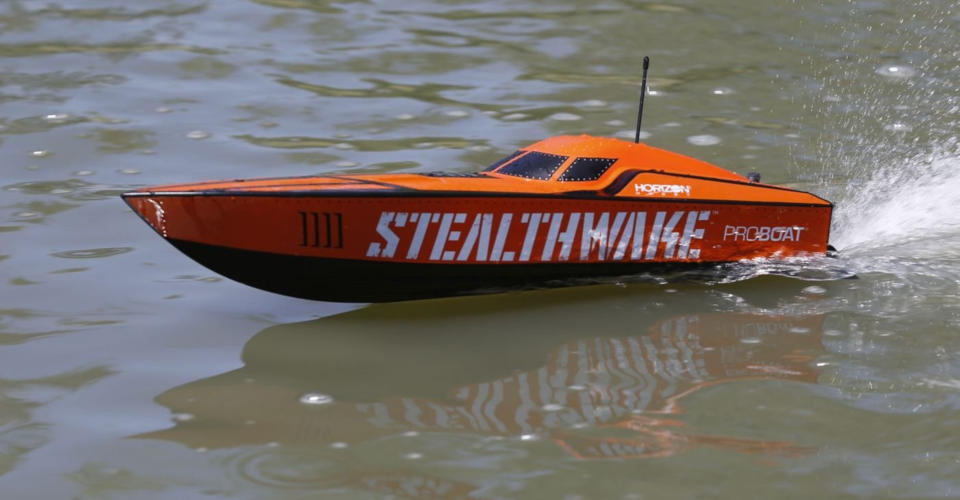
If you have never built an RC boat before, this post by 3DINSIDER is a must-read! You’ll find out RC boat types, designs, and power source options in this post.
What’s more, if you’re conflicted between buying a kit and building your RC boat from scratch., this post might help you get a better idea of which route you should take.
For your ease, they’ve rated several RC boat kits in this post and have given you a brief outline on how to build your first RC boat.
In this first part of the tutorial video by IRONCLAD RC, the Youtuber demonstrates to you how to install stuffing tubes, struts, rudder, motor mount, brushless motor, battery, and the mini servo.
Likewise, the second part of the DIY series includes a sponson setup, ride pad, adjustment, final fit, and finish of the mini FRP outrigger .
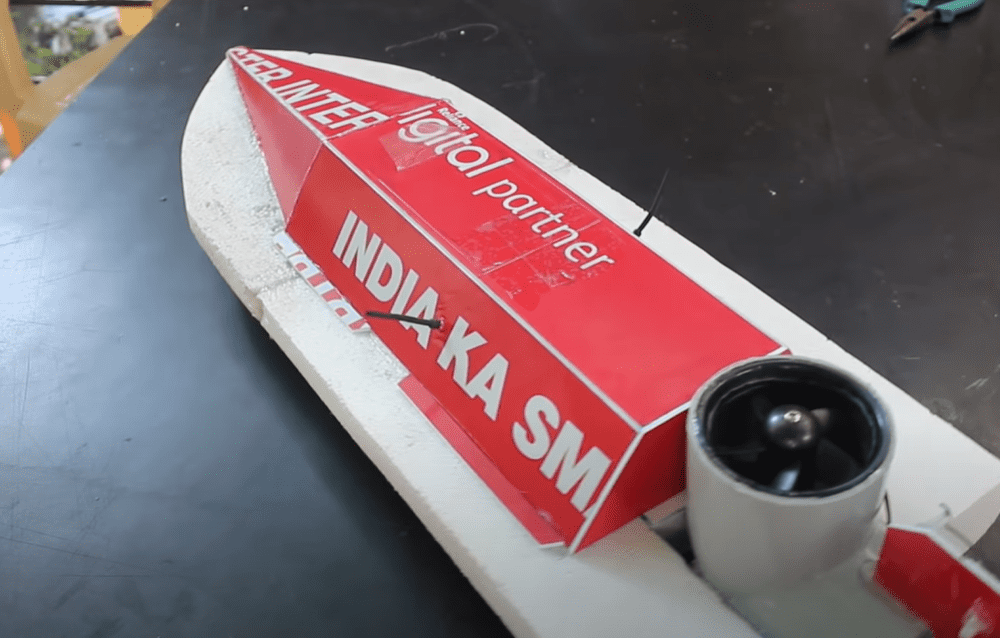
DIYs such as building an RC boat is quite complex if you’re a complete beginner in building such a project. We’re sure plenty of questions is roaming your head. For instance, how does an RC boat work? Can you convert an RC car into an RC boat?
Well, to your rescue, you can find all your answers in this post by SeniorCare2Share. Though this is not a step-by-step tutorial on how to build an RC boat , we’re certain that this blog will come in handy.
Unfortunately, this tutorial video on building a big RC Boat by CRAZY DIY is in Thai. So, only watch this tutorial if you aren’t a complete beginner and can get the hint of what the Youtuber is doing without having to explain everything.
![rc yacht plans How To Make A RC Boat Trailer [5 Easy Steps]](https://www.boatdriving.org/wp-content/uploads/2022/02/How-To-Make-A-RC-Boat-Trailer-5-Easy-Steps.jpg)
Cecil Webb from RC HOBBY TIPS instructs you on how to build an RC boat trailer in 5 easy steps. He has listed all the materials and tools you will need for the project at the beginning of the post.
In the first section, he guides his viewers on making the base, followed by making a supporting front for the boat.
Then, it’s time to make fenders for the tires, make some suspension and axles, and finally finish the DIY. What’s more, there are some FAQs at the end of the post. Your queries are most probably answered there!
Learn how to make a fantastic RC yacht in this video tutorial by Julius Perdena. The DIY yacht is 63 inches in length and 11 inches in width and powered by Inrunner brushless motor with a 50A boat ESC.
You can find all the supplies, dimensions, and electronics necessary for this project listed in the description box.
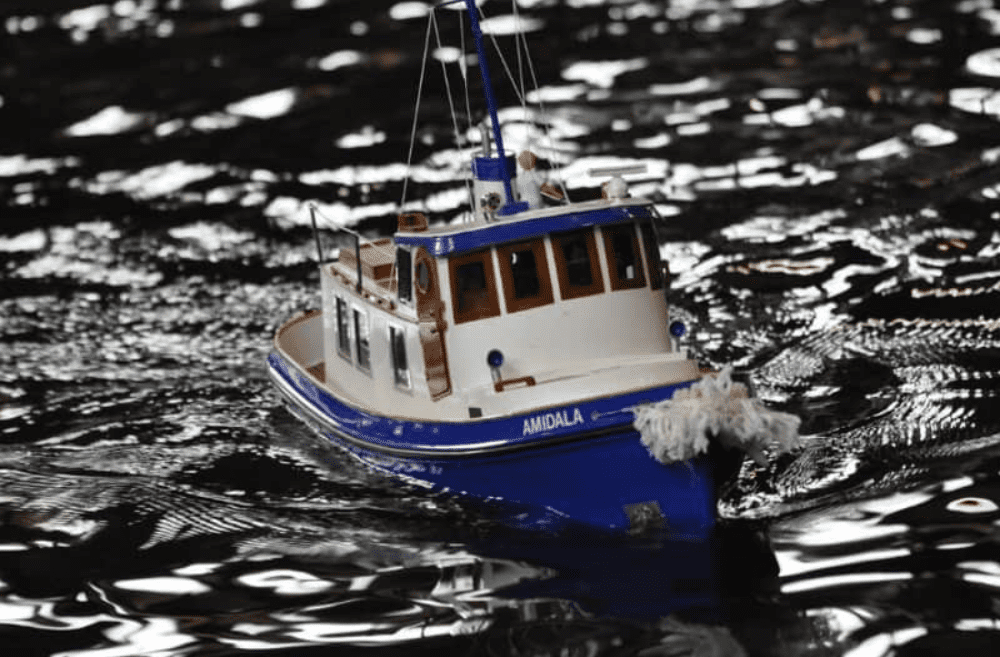
If you are bored of your RC car and are planning to convert it into an RC boat, we’ve got something for you as well! In this blog by Race N’ RCs, you’ll be guided in detail on how you can disassemble your RC car and convert it into a fabulous RC boat.
In this DIY, all you have to do is modify the battery box, DIY a styrofoam base for the RC boat, create propellers, and assemble the parts.
Do you have an old and unused RC car receiver and remote control? If yes, we’ve found the perfect DIY for you! In this video tutorial by DIY ACTIVE, the Youtuber utilizes the parts from his old RC car and a phone battery and DIYs a fantastic boat using foam.
Once you have all the supplies you need at your disposal, the tutorial is quite easy to follow along. If you’re a DIY fanatic, DIY ACTIVE has many more interesting projects for you!
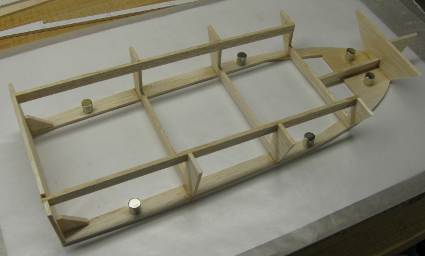
Are you planning to build your RC boat from scratch? If yes, Building Model Boats has got you covered! Download the plan shared with you at the beginning of the blog and replicate the directions as closely as possible to DIY a fabulous RC boat for yourself.
This is the first part of the RC boat build. If you find the project interesting, here’s Part 2, Part 3, Part 4, and Part 5 of the project.
Do you want to build a high-quality fast-moving RC boat? Well, if yes, KendinYap has just the tutorial for you!
All the supplies and their purchase links are mentioned in the description box. In the video, each and every step is demonstrated in great detail. It is a fantastic tutorial for beginners!
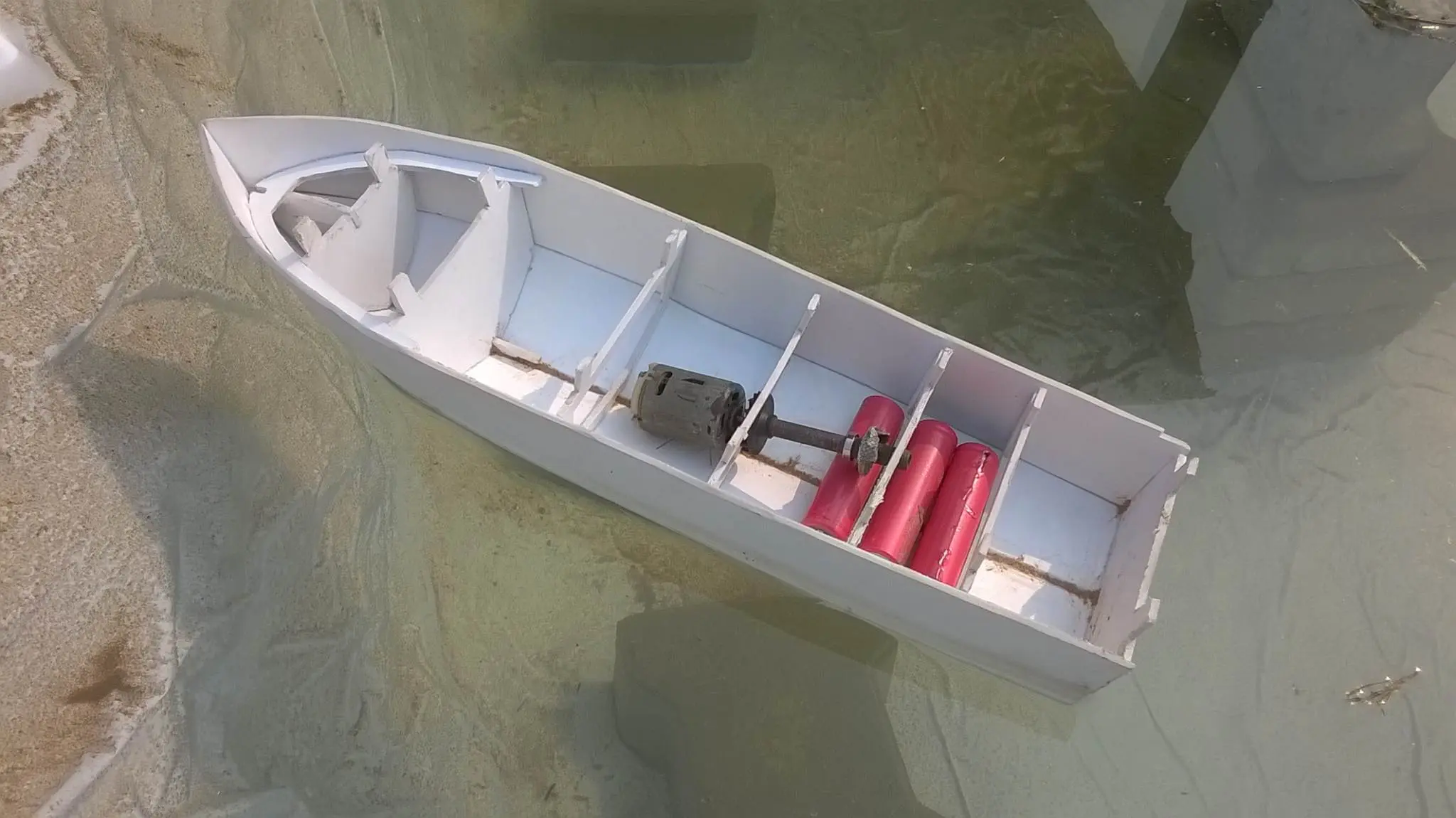
Learn how to build an RC boat propelled by a DC motor in this post by Arnab Kumar Das. The blogger has used a PVC board to DIY the boat structure and three Li-Ion 18650 cells as the power source. You can find the downloadable plan at the beginning of the blog.
All the steps are elaborated in detail using demonstrative images. Even if you’re a beginner, you will definitely be able to follow along.
If you’re into fishing, you’d absolutely love to build a bait RC boat, wouldn’t you? Luckily, Creative Channel instructs you how to.
This DIY uses 5mm plywood, DC reducer motors, a transmitter, electric wires, and a few other tools and supplies. What’s more, this tutorial is straightforward and easy to follow.
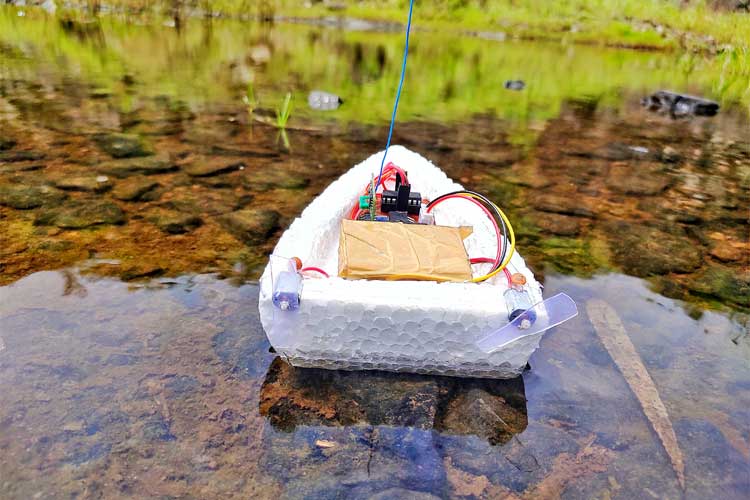
As the title suggests, this blog by Circuit Digest instructs you on building an Arduino RC boat controlled by 433 MHz RF modules.
Looking at the plan and instructions, it seems like you need to have a little grasp on electronics and programming if you want to complete this DIY successfully.
The step-by-step instructions are accompanied by demonstrative and illustrative figures for your convenience. Also, don’t forget to check out the testing and explanation video at the end of the blog.
If you want to build a slightly bigger RC supply boat , Erland Wingar-Elnes demonstrates the process in this video. From the build to the design, everything about this RC ship is stunning.
If you want to replicate this supply boat DIY, here’s Part 2, where the Youtuber tests the boat in the water.
We hope all these RC boat enthusiast bloggers and vloggers not only instruct you on the build but also motivate you actually to gather supplies for your favorite DIY plan and start on the build right away.
Do you have any queries, information, or feedback that you’d like to discuss with us? We’re all ears!
Related posts:
16 homemade boat console plans you can diy easily.
- 18 Homemade Bass Boat Plans You Can DIY Easily
- 18 Homemade Aluminum Boat Plans You Can DIY Easily
- 17 Homemade Boat Motors Plans You Can DIY Easily
Similar Posts

27 Homemade Pontoon Boat Plans You Can DIY Easily
Pontoon boats are expensive to buy, but making one yourself can be simple and affordable, allowing you to save a whole lot of cash at the same time as tackling a highly rewarding project. For anyone who thinks they might like to have a go, we’ve had a look online to see what other people…

16 Homemade Boat Dock Plans You Can DIY Easily
If your dock is a complete wreck and you’d like to replace it with a brand new, DIY dock, you’re at the right place! Be it building a cost-effective, simple floating dock to have a good time on or building an on-site big dock system, we’ve got you covered! Read on to find out 16…
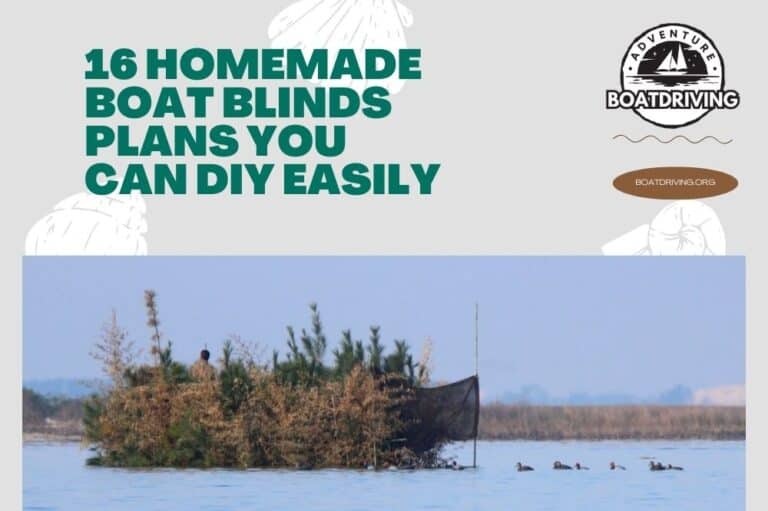
16 Homemade Boat Blinds Plans You Can DIY Easily
If you’re getting your boat ready for the waterfowl hunting season, a boat blind is a must! The good news is that these blinds are complete DIY-friendly. All you have to do is build a frame and camouflage it. Sounds too simple, right? It’s because it really is! In this post, we’ve collected 17 best…

18 Homemade Wood Boat Plans You Can DIY Easily
While the blissful and fun feeling a wooden boat offers while cruising in the calm waters is unparalleled, it is sometimes a luxury we cannot afford. Yes, quality wooden boats can cost a fortune! How’d you like it if we say you can DIY a fantastic wooden boat from scratch all by yourself and for…

Is your boat console old, damaged, in short, a total wreck? If yes, you might be rightfully worried about the money you’ll have to invest in over-priced consoles available commercially? Luckily, building a boat console is a completely DIY-friendly project. In fact, we’ve prepared a list of 16 DIY boat console ideas for you. Install…

17 Homemade Boat Seats Plans You Can DIY Easily
Put your heart and soul into maintaining your boat and preventing its accessories from water and weather; the damage is inevitable. Sooner or later, you’ll notice your seats old, dirty, and ragged, and it is only human to want to replace them. The bad news is that boat seat costs you hundreds of dollars! But…
Leave a Reply Cancel reply
Your email address will not be published. Required fields are marked *
Save my name, email, and website in this browser for the next time I comment.
3D Printed RC Sailboat

Introduction: 3D Printed RC Sailboat

Hi I'm Ethan and I spent large amount of time on what I would call a very interesting project.
Step 1: What Made Me Choose a Sailboat.

For about a year now I have been following the progress of the Tally Ho project. The YouTube channel Sampson Boat Co documents the mission to rebuild the 110 year old classic sailing yacht Tally Ho. Ever since I started watching this project I have been intrigued by the detail and design that goes into a sailboat. When I began this project I severely underestimated the difficulty of doing this project on Inventor and overestimated my AutoCAD Inventor skills. Although through the 11 hours I have spent trying to design and fix the endless errors created by those designs I can happily say that I'm proud of what I made and that I have progressed my inventor skills.
Step 2: Understanding the Design

I got the design for this boat from studying other ships rib sketches and designs. I used CAD Inventor to spline the shape of each rib to create the shape of the hull. The 3d model required a large ammount of work to get it to print correctly.
Step 3: 3D Printing

To print the boat I put the files into my slicer and scaled them up to 643% because of how its loaded in. The hull should add up to be about 20 inches or so. make sure to print with the largest flat surface of each part as the base to prevent warping. In you slicer's settings your going to set infill to 0 and the top and bottom layer to the minimum thickness so that you can cut the parts open. Although for the bow and stern only change the settings for the first layer. After that you should have all 6 parts done. You will also want to sand out the hole that the mast will insert into.
Step 4: Assembly

For assembling the parts I used 15 minute Resin. you should attach sets of 2 and think of where you want it to split. I chose to have the split be before the mast as shown by the black tape. The split is where I put in all of the electronics. When sealing up the split part of the boat I used hot glue so I could peel it away and reopen it to access the electronics. I know that's not the best way but I was trying to stay away from designing a hinge door on the deck.
Step 5: Electronics

For the electronics I tore apart an old RC car for the servo and receiver with matching remote. I went to a hobby shop and bought a AA battery pack for the power supply. The Servo was placed into a cut out I made in the deck with a Dremel and the rest was placed inside. Remember that depending on what your using for ballast and where it is in the boat you might have to take into account where the battery pack is placed.
Step 6: Ballast and Rudder

For the ballast I used stainless steel bb gun ammo because of how heavy it is and that is more or less form fitting. you can use other materials for ballast but take into to account how you will secure it in place. The rudder is made out of a cut as sanded paint mixer and the shaft is a shaped piece of solder with a rivet head hammered onto the top end to make sure the servo doesn't disconnect.
Step 7: Mast and Lines

Around the hull are two loops and two rods that are used as tie down points for the lines the attach to the top of the mast. Mast was also assembled using resign. Once you insert the fully assembled mast you should take string or wire and tie each of the four points to the top of the mast. Once the lines are done I cut out the mainsail using a Zip-Lock bag. the joints are made of tape and the beam along the bottom of the sail is another piece of solder.
Step 8: The Printable Files
Attachments.

Participated in the Make it Move Contest 2020
Recommendations

Water Contest

Farm to Table Contest

Colors of the Rainbow Contest


IMAGES
VIDEO
COMMENTS
Here is a selection of plans and resources. Everything from a 375mm boat right up to a 1500mm fast yacht. 7 designs absolutely free to download. ... easy, and affordable home build RC yacht. RS-RG65 - 650mm plans, measures to international RG65 rules. A full forward hull and a straight stern. This boat has proven to be a very fast and ...
These RC boat plans are meant for scratch building radio controlled boats mainly from balsa and with a minimum of tools required. RC Cabin Cruiser. Skill level: Easy. This RC boat plan is the first of a series I've decided to develop primarily with beginners in mind. To further lower the threshold to get into this amazing hobby I decided to lay ...
The plans are located here: A more complete list of my designs is here: Plans are normally drawn on A4 and A3 format. Sections and appendages are normally drawn full size, 1:1. Some fin and bulb drawings are drawn to be printed in two halves and joined after printing. Arrangement drawings are 1:5 and sometimes 1:4.
Our eBook by New Zealander Bryn Heveldt covers strip planking, fibreglass strengthening, mould and casting techniques, electrics installation, spray painting and masking, sail making and tuning. To get started on your Racing Sparrow model RC yacht project, purchase our eBook and download the PDF now. Purchase PDF eBook $14.99. *USD.
The Ever-evolving World of RC Boat Plans. The world of RC boats is ever-dynamic. With advancing technology and evolving design philosophies, new plans and models continually emerge, offering hobbyists endless avenues to explore. It ensures that the world of RC boat building remains fresh, exciting, and continuously challenging.
Sailing on a regular basis in "scale 1", we had the idea of having fun by sailing two boats to race in our "spare time". The boats had to meet the following specifications: Easy to transport. Measuring just 50 cm, our MiniX doesn't take up much space in a trunk. However, the keel and mast can be dismantled. If need be, the MiniX can even be ...
Step 3: Cutting the Pieces. Resize the .PDF as you wish for making a bigger or smaller boat. This model is 900mm long. Tip: Under 550mm boats built with this plans tend to submerge when the lake is choppy. Be careful! Print the pieces in white paper sheets and stick them on the 3mm panel.
Leave 1/8" to 1/4" (3-6mm) between the outline of the parts. Once your happy with the layout you can pencil in the outline of the templates onto the balsa, or take a picture, so you remember where each piece go. Use the Spray Mount adhesive to glue the templates in place. Follow the instructions on the can.
Epsilon Basic Hull and Deck STL: This is suitable for turning into 3D drawings for 3D printing. Can also be used as is for CNC. You should be aware that you also need to purchase the plan of the Epsilon RG to build the boat as the licence is attached to the plan not to this drawing. $15AUD. Goth XP RG - RG65 Plan is the 2015 development of ...
RC Boat Plans. If you want to scratch build an RC boat, first thing to do is to get yourself a set of plans. I'm currently offering the following RC boat plans: Simple RC boat plans. The fist of a series of plans are now released. The first one is an easy-to-build cabin cruiser. Follow the link above for more information about the plans.
Ardent - Plan + Article. SKU: MAR3022. Two sheet plans for a classic ply chine sail cruising yacht length 900mm and beam 260mm. Hull lines and rig... £ 20.00 £ 18.00 Add to basket Sale.
RC model building is a social pastime where people swap ideas, give advice, and share tips. The RCGroups forum is an excellent place for all the above. You can browse for free, but you need to join to search. There are many threads (discussions) on this site for RC boat plans and RC building. Plans to Make an Easy & Fast RC Boat!
V11. The V11 design is a hull, foils and bulb package to compliment the full range of conditions experienced in RC Sailing. The hull design has full volume forward and features the familiar chines and tumblehome of the modern IOM for reduced weight and windage, as well as good tracking characteristics. The V11 features our peaked style foredeck ...
Boats and Sailboats Models Plans Various Boats and Sailboats Plans blue prints PDF DXF CDR DWG JPG etc IOM Class Rules Hull design Models Photos US1M US One Meter class and much more. Interesting model boats website in German: -----://parkseeskipper.de There are 572 Model Airplane Plans on 58 pages. Currently displaying plan 1 to 10
The Nightmare is designed to be able to sail on one float, it is a stable design which is not pitch poling easily. Look the pictures and the video clips of our boats. Free plans for the MK VII and the MK VIII can be downloaded here. Boat Data: - hull lenght 1200mm without front fender - beam 1210mm - epoxy-fiber glass floats , weight about 475g ...
R/C Sailboat Builds. 1. A Tippecanoe T37. These are kits available from Tippecanoe Boats in Washington State. 2. A classic, wooden, Star 45. It has been officially measured and is class legal. The Star 45 is a pretty, classy, builders boat that has withstood the test of time. 3.
RC Motor Boats. Latest RC Model Boat and Airboat plans added to the website. River Jet Boat. 450 Boat Electric-Powered. This is an aluminum style boat that can be built with 5mm foam, and powered with a shaft or a jet drive. Schiada 20 SS. 879 Boat Glow-Powered.
RC Boat Plans - CAD Generated PT boat plans. There are two "bundles" of these plans: 1. 1:32 and 1:24 in a single zip file. Each consist of two sheets in PDF format. Find out more here. 2. 1:16 ***NEW*** Giant scale on three 36" x 72" sheets. Read more here. For prospective buyers outside the USA: Make sure you have a printer who can handle the ...
7) Assemble the motor, wiring, and electronics onto the boat hull. 8) Install float switch and ignition circuit. 9) Install steering controls and electronics onto the boat hull. 10) Install propeller into boat hull and wiring. Tips for keeping your remote control boat in good condition. Conclusion.
RadioSailingShop FP1 FREE PLANS for IOM - See details for weblinks to free plans [FP1] - See our Building an IOM page for details on building the mould and the hull of the NOUX 2 in the photo above. Note unless you are planning to build multiple hulls, or require a moulded fibreglass hull there is no need to build a mould, you can just make a planked hull from the drawings.
In this video we are taking a look through the newly re worked RC or model boat plans that I have out together for Temptress. A really simple set of RC boat ...
Learn how to make a fantastic RC yacht in this video tutorial by Julius Perdena. The DIY yacht is 63 inches in length and 11 inches in width and powered by Inrunner brushless motor with a 50A boat ESC. You can find all the supplies, dimensions, and electronics necessary for this project listed in the description box. 10.
Step 3: 3D Printing. To print the boat I put the files into my slicer and scaled them up to 643% because of how its loaded in. The hull should add up to be about 20 inches or so. make sure to print with the largest flat surface of each part as the base to prevent warping. In you slicer's settings your going to set infill to 0 and the top and ...